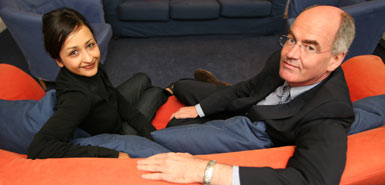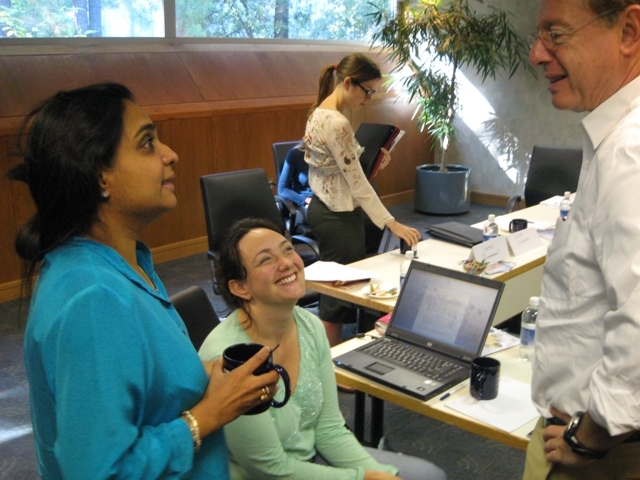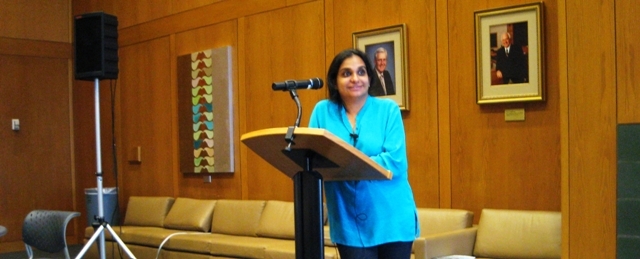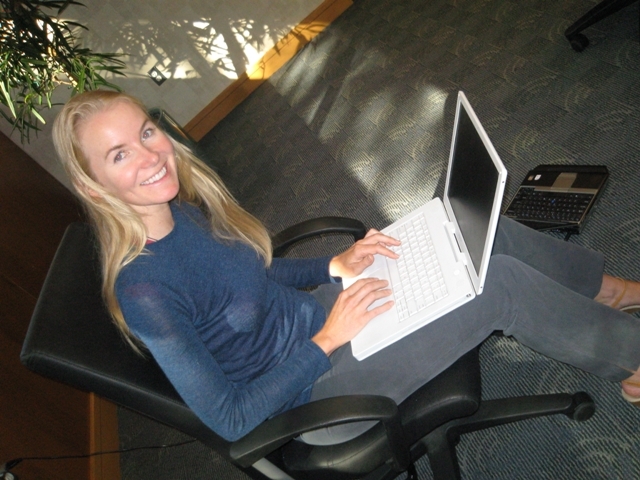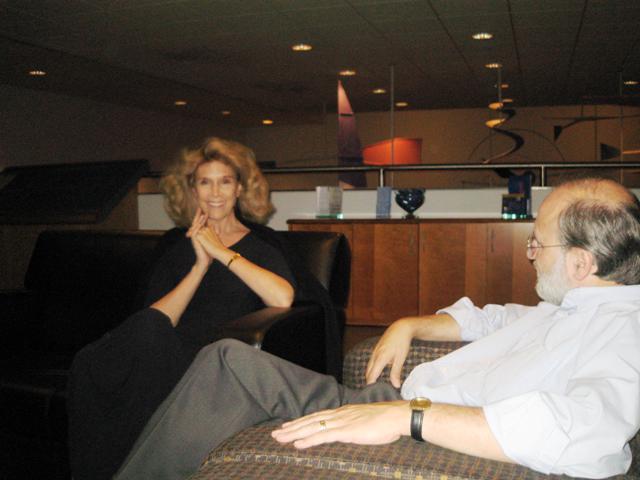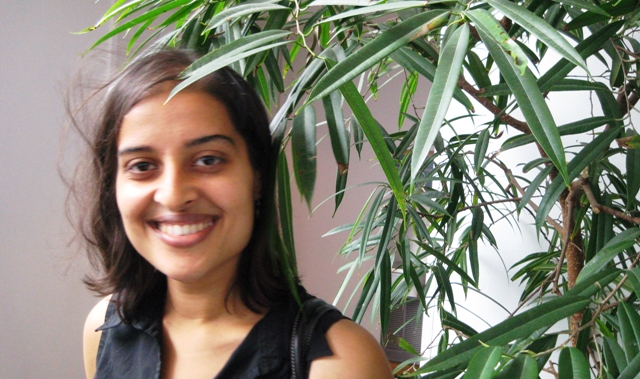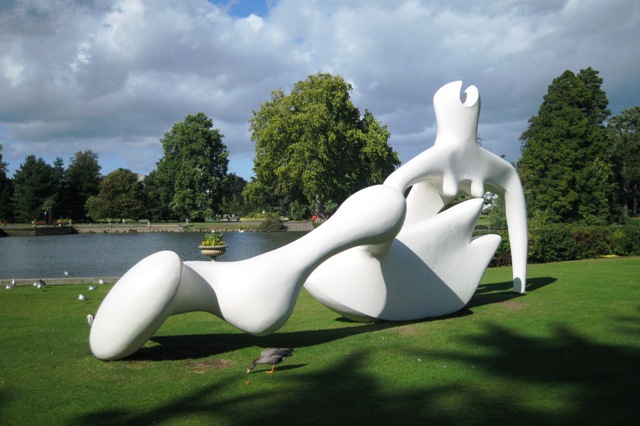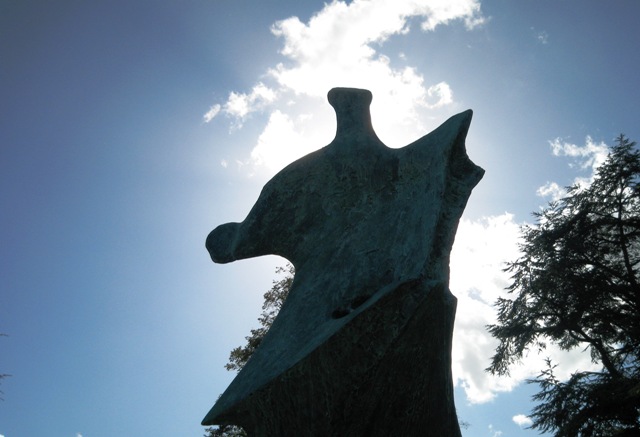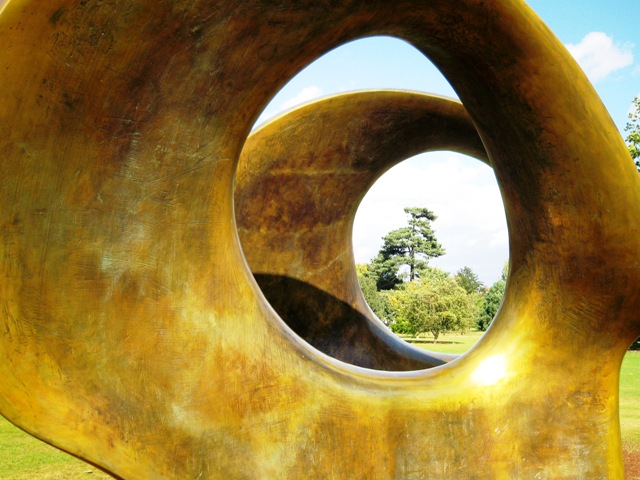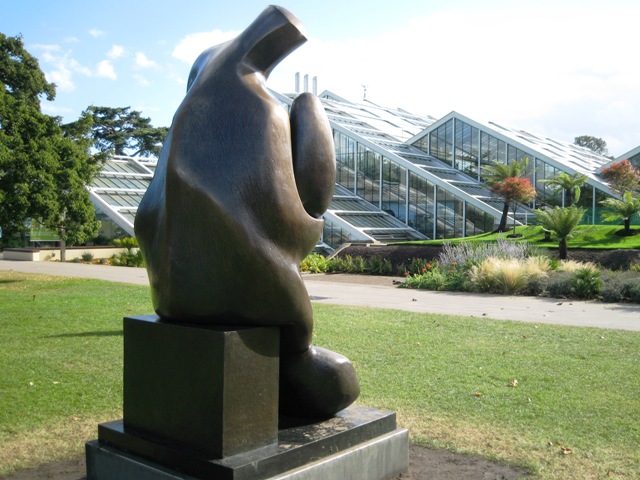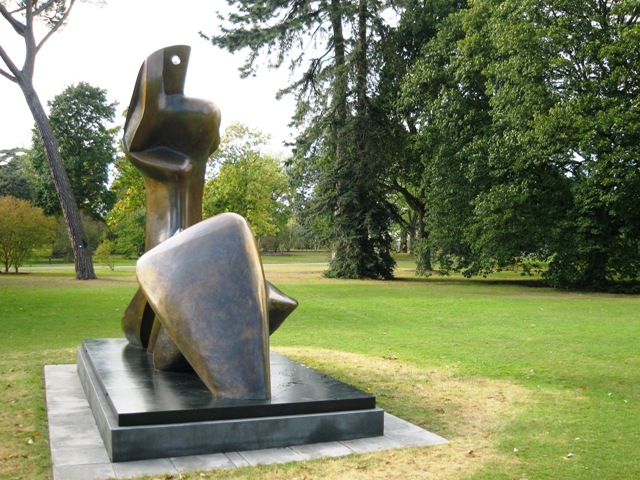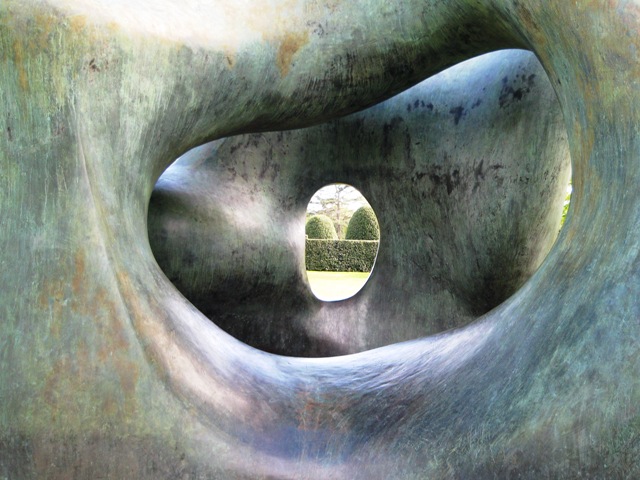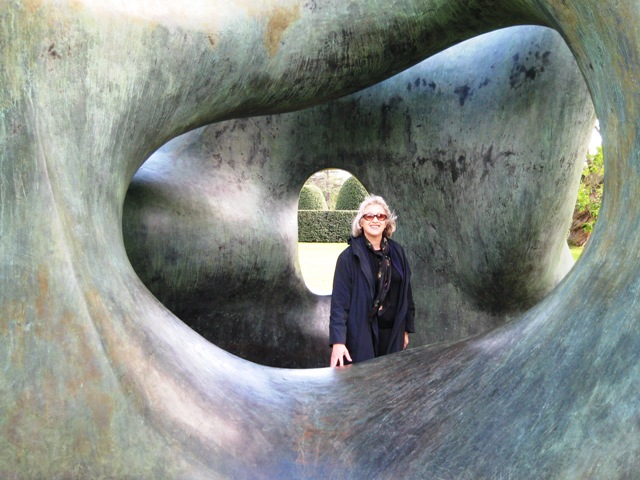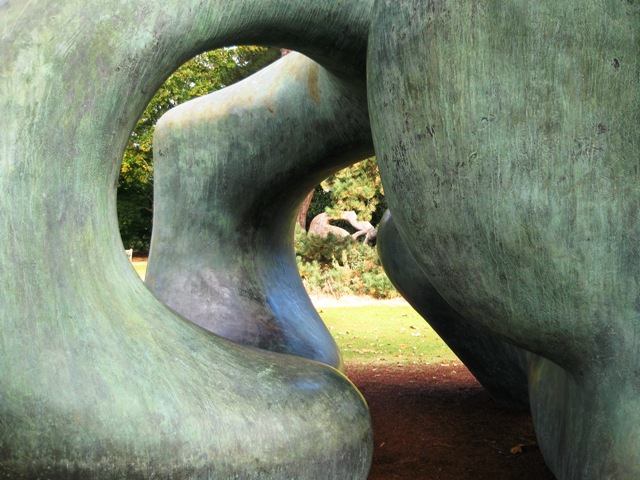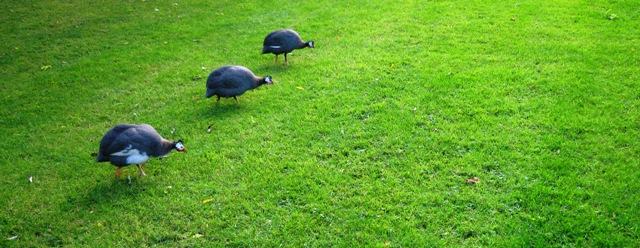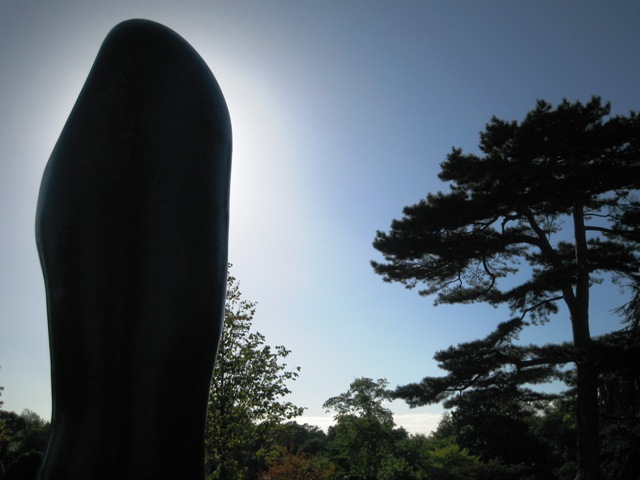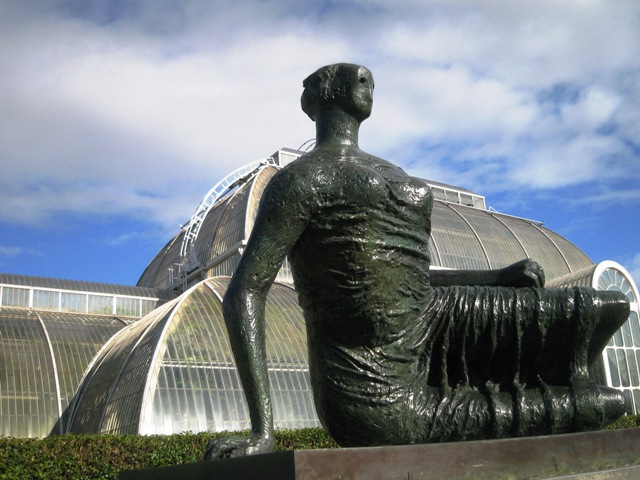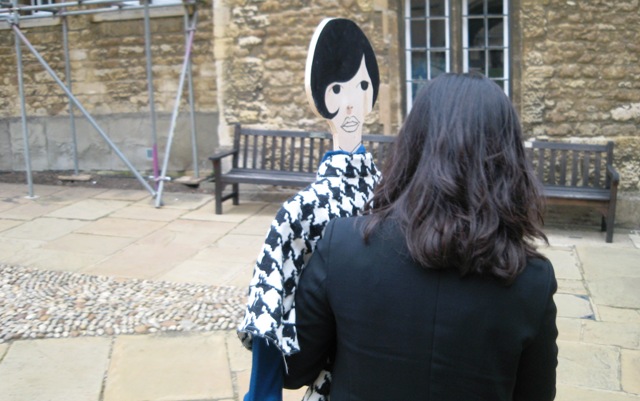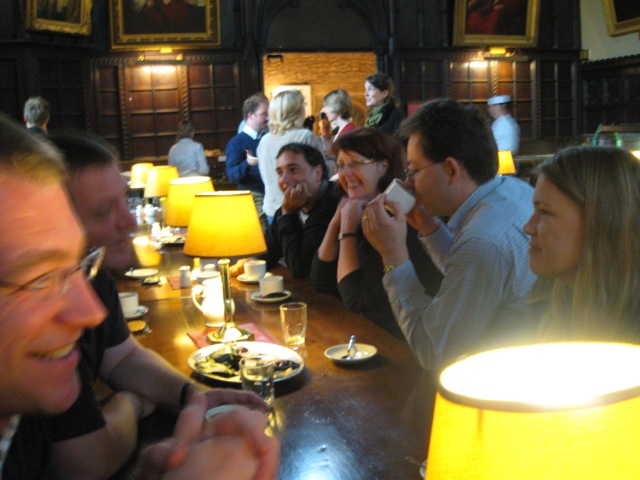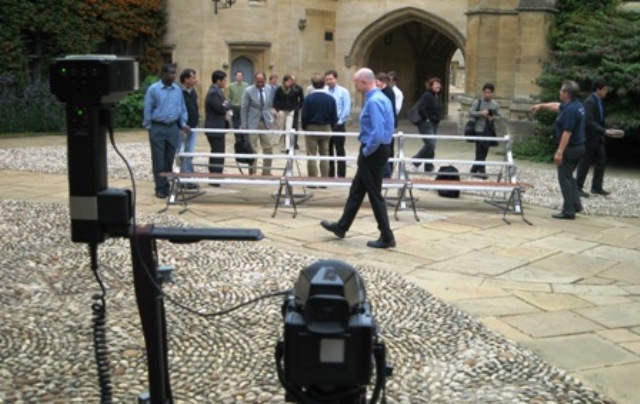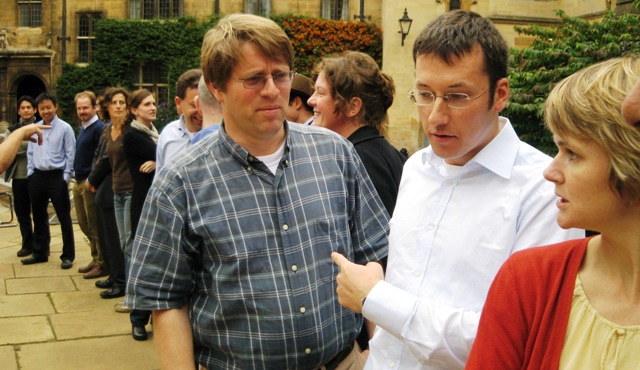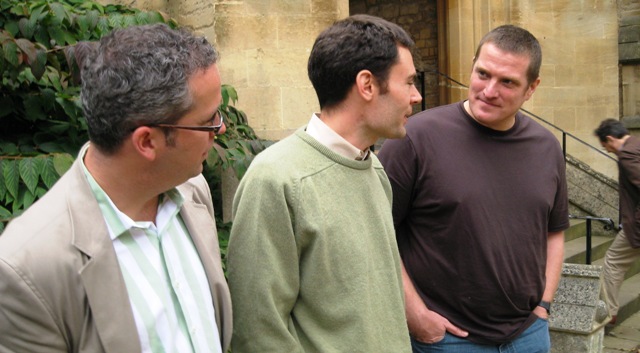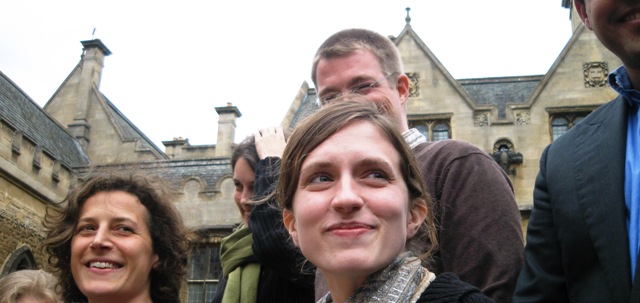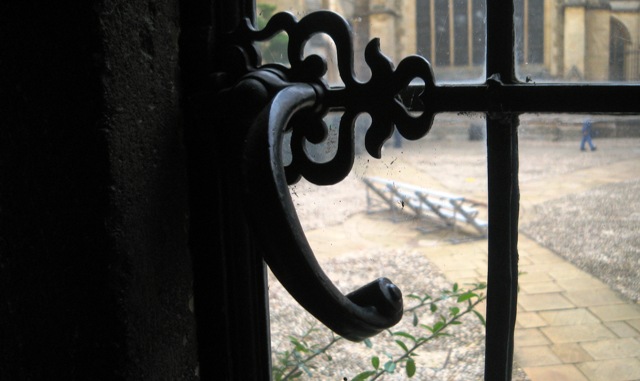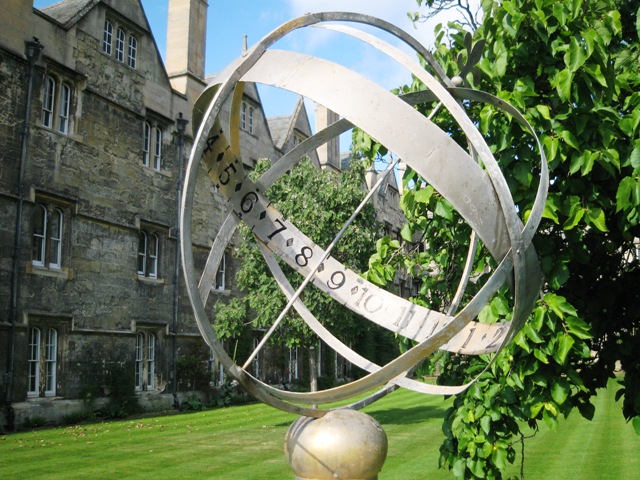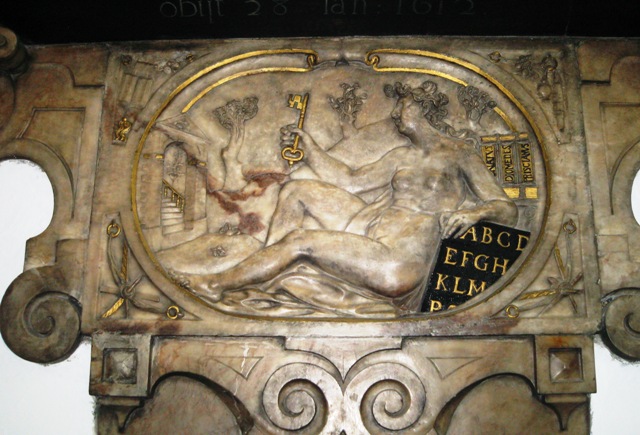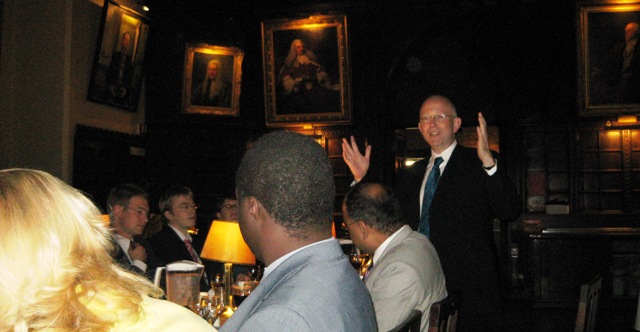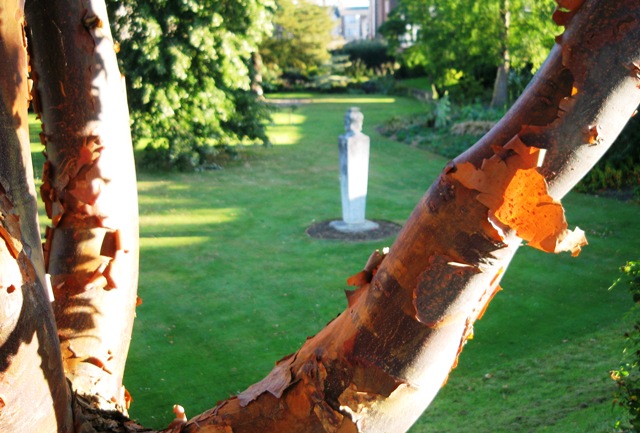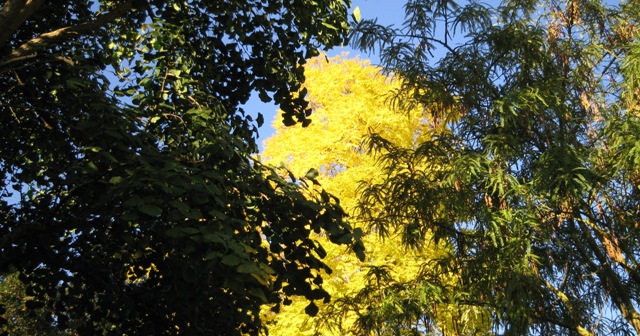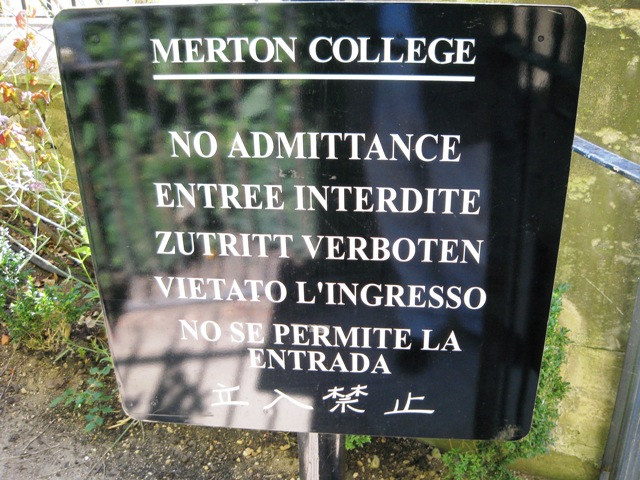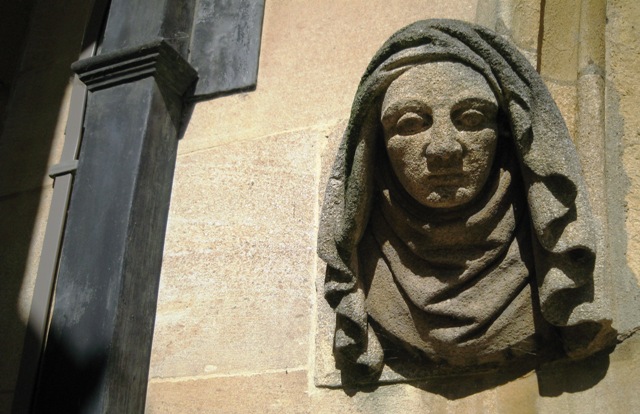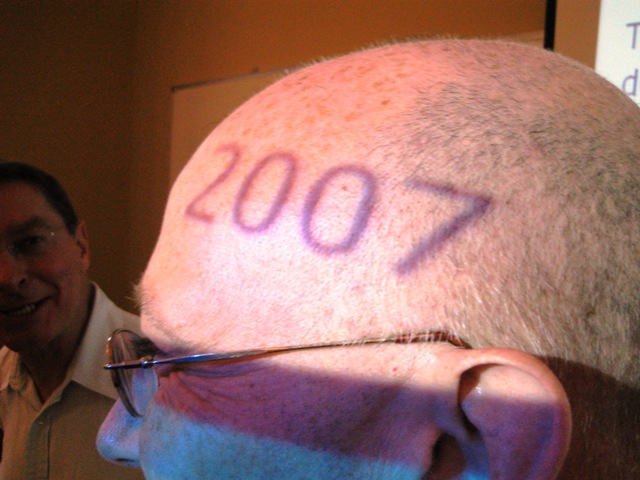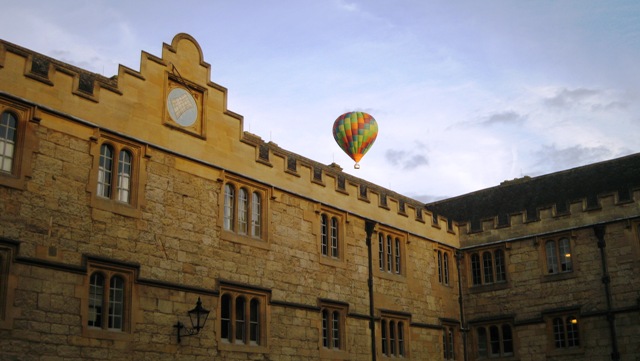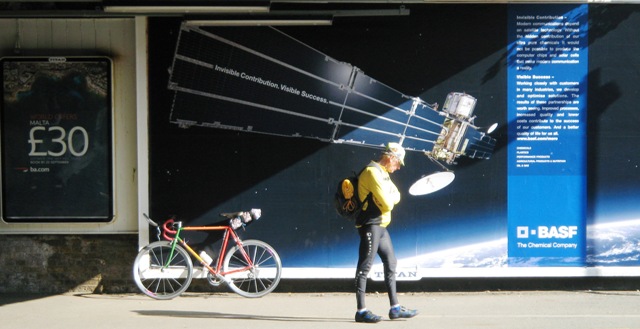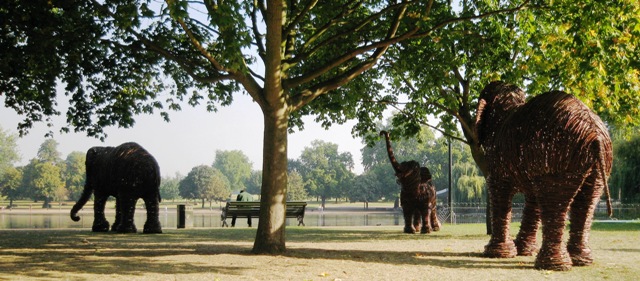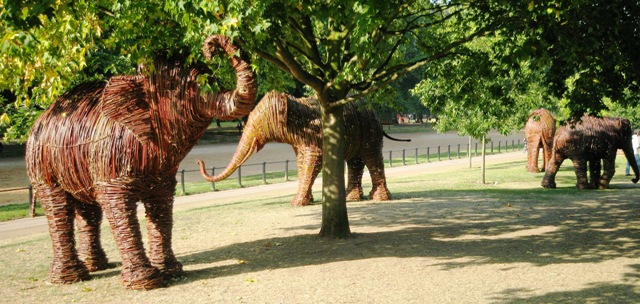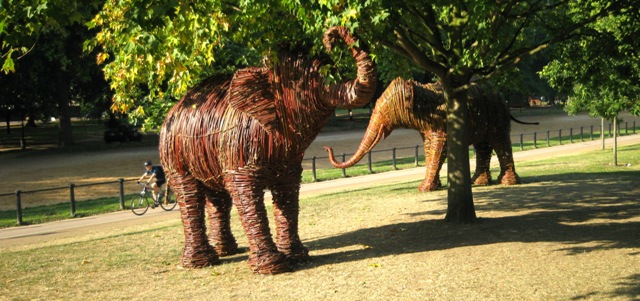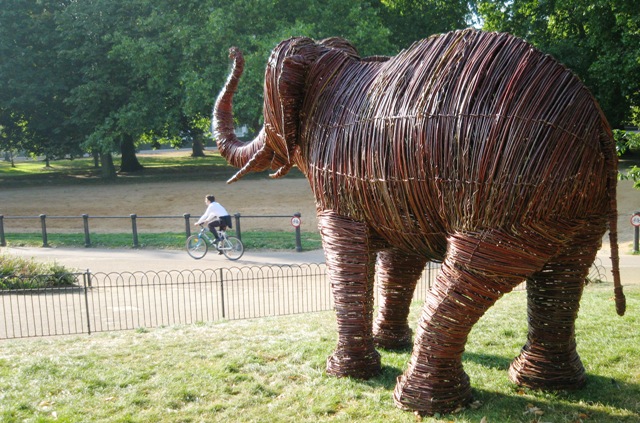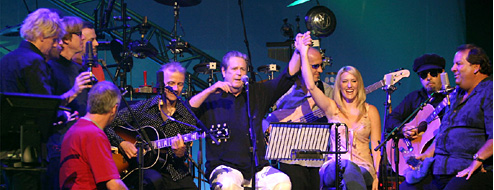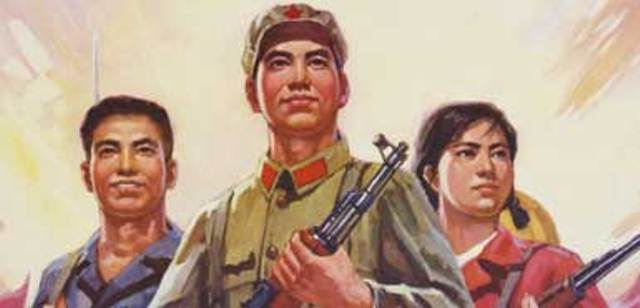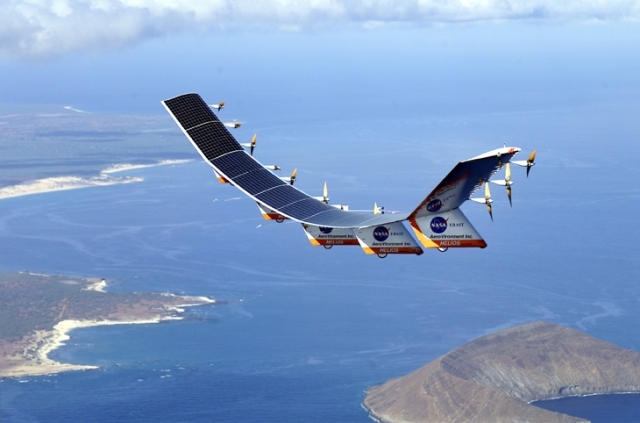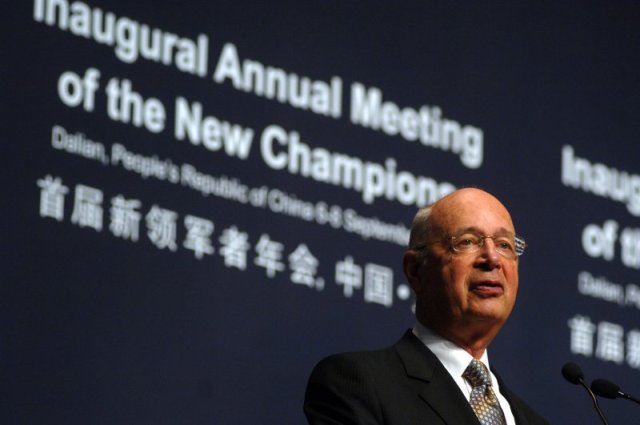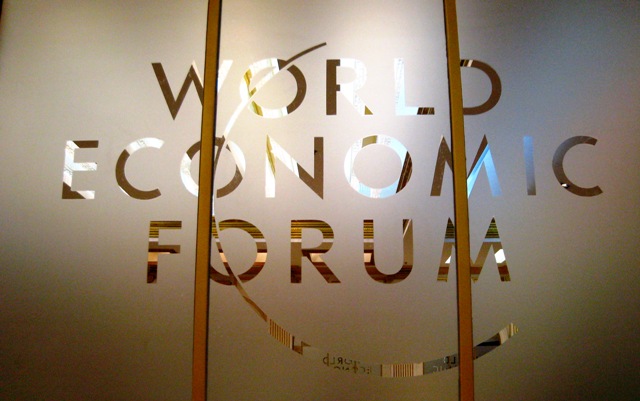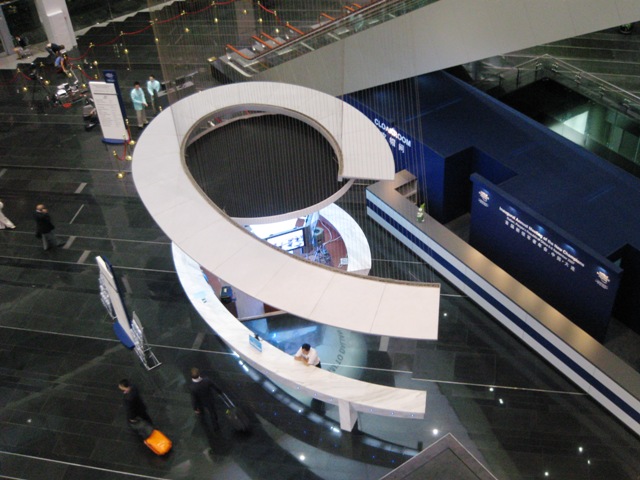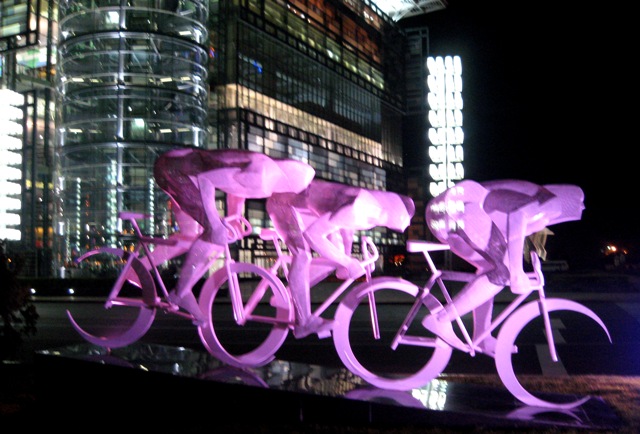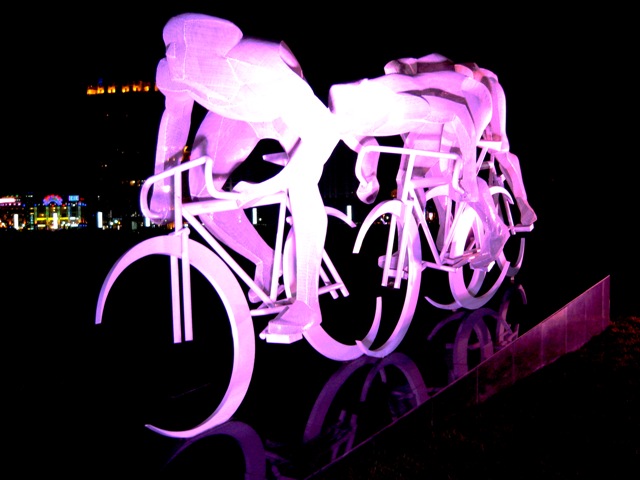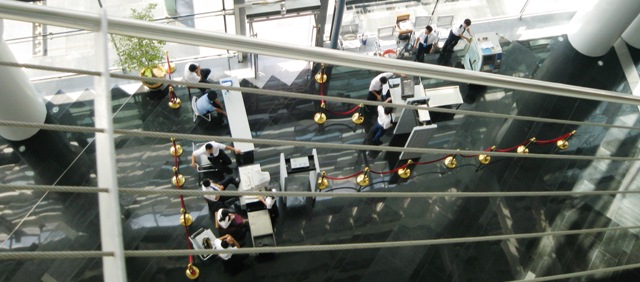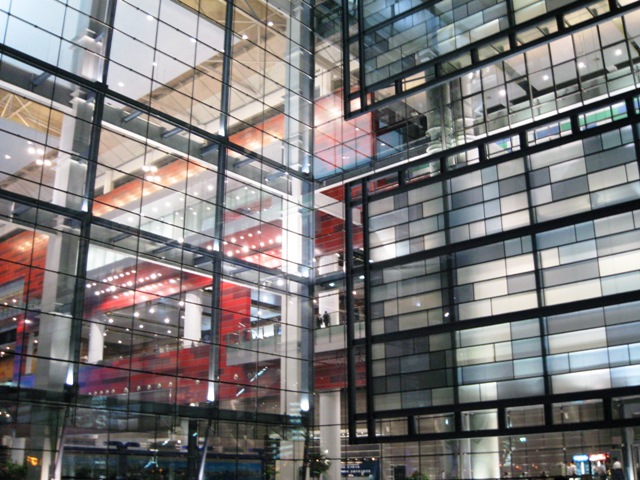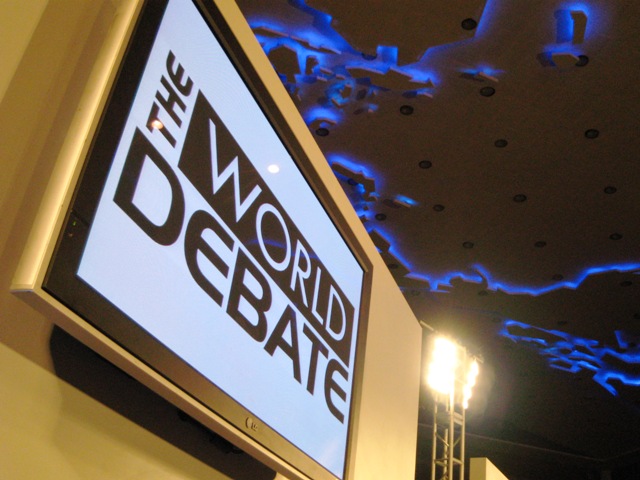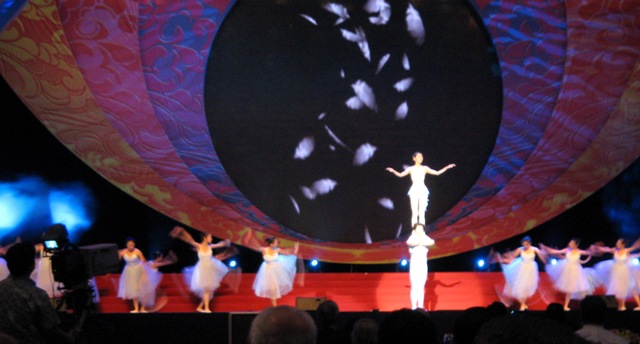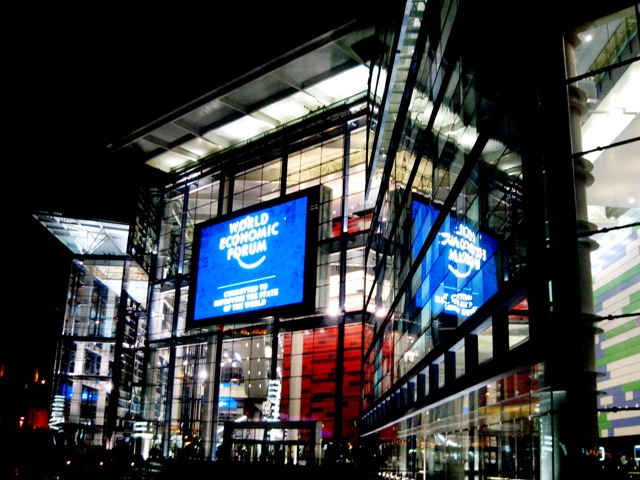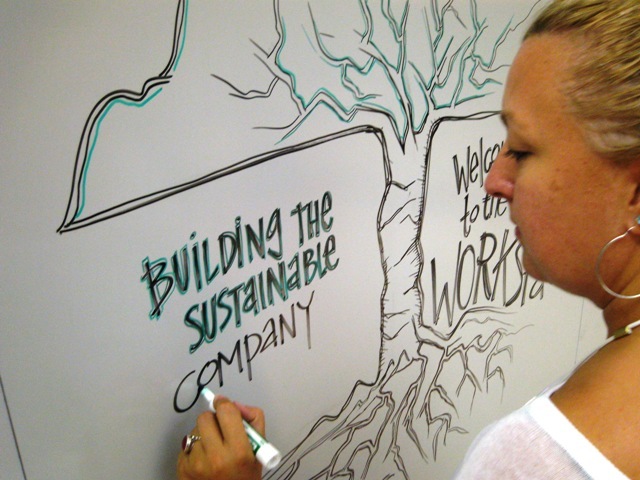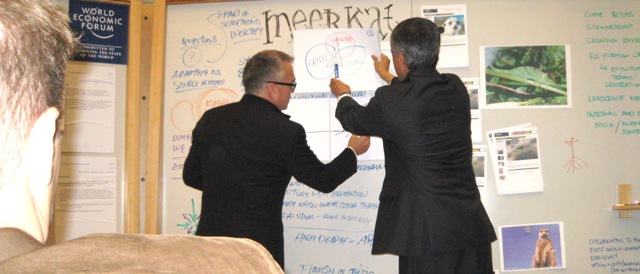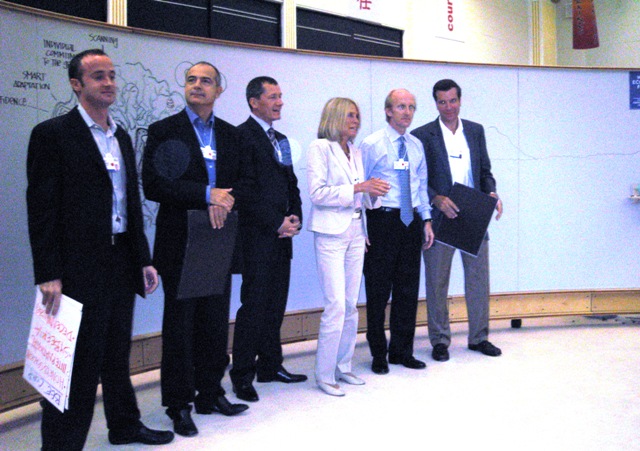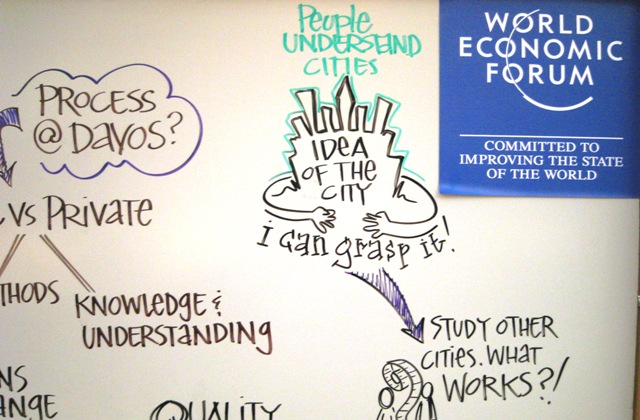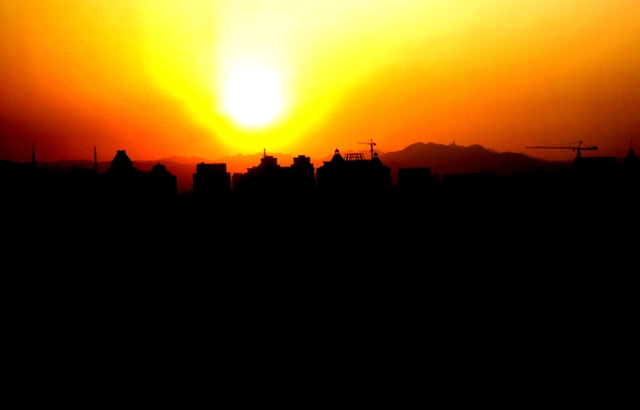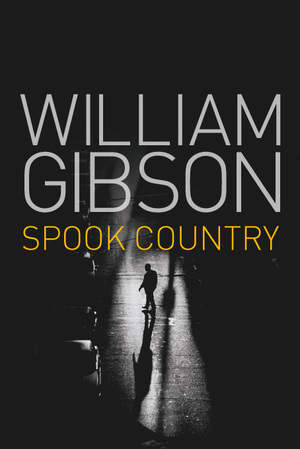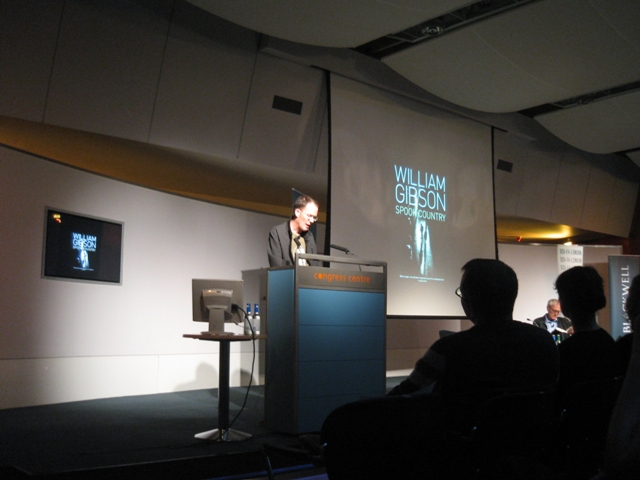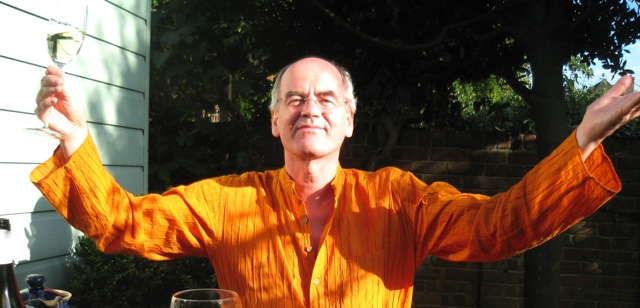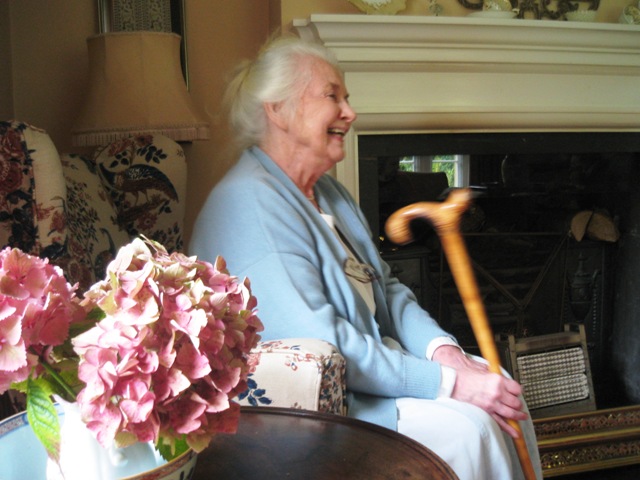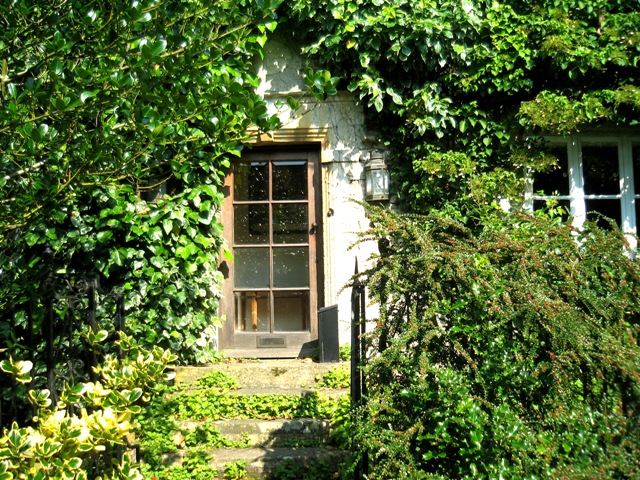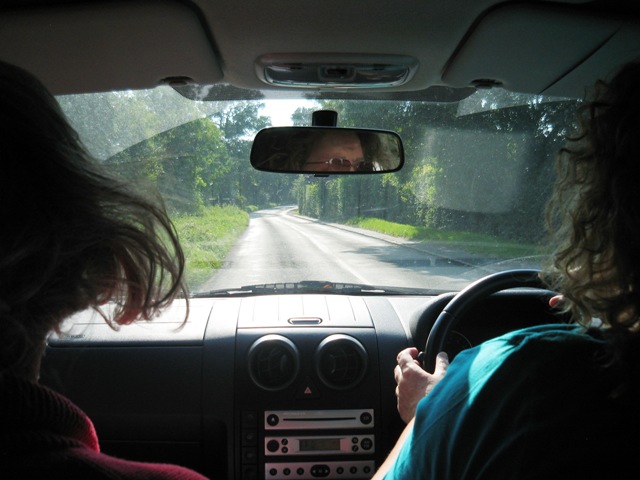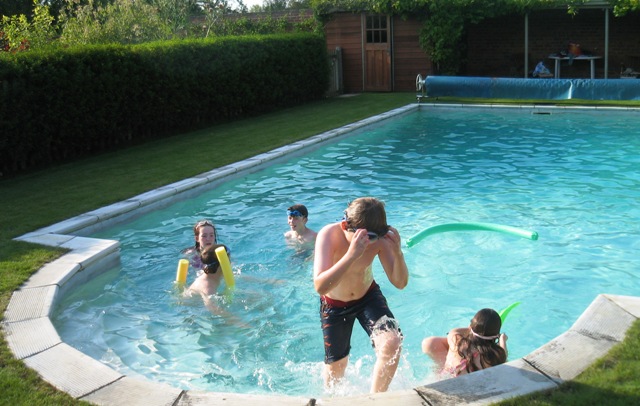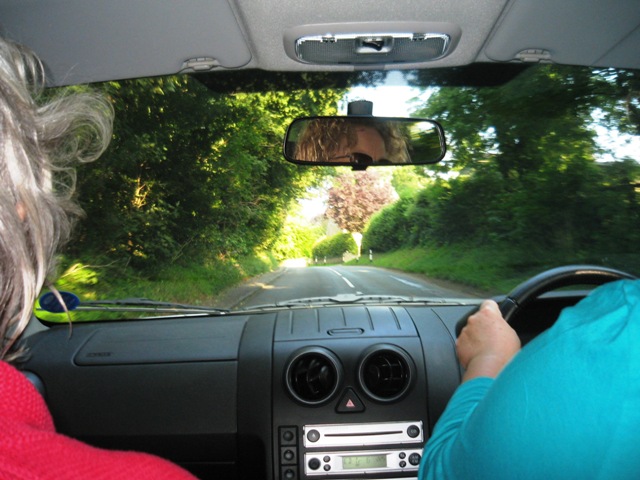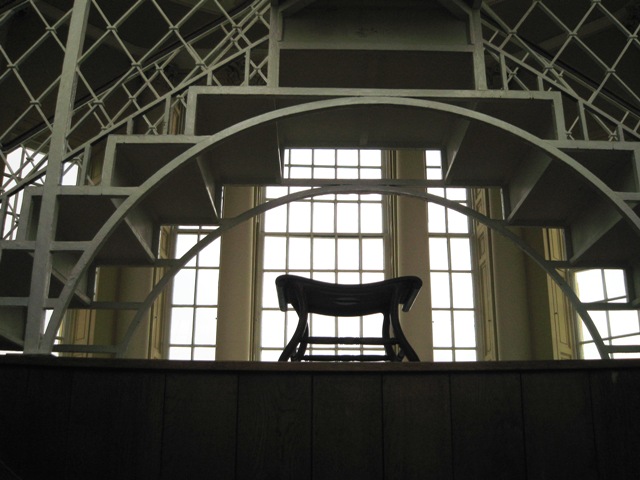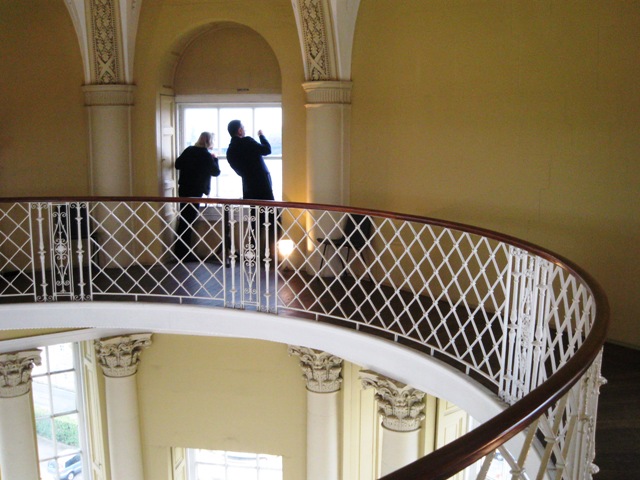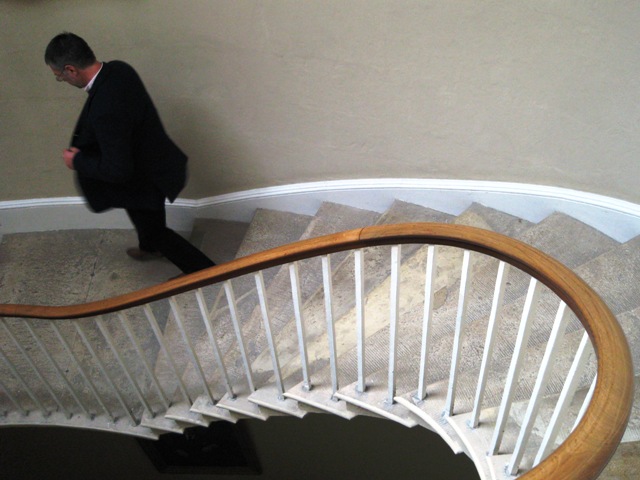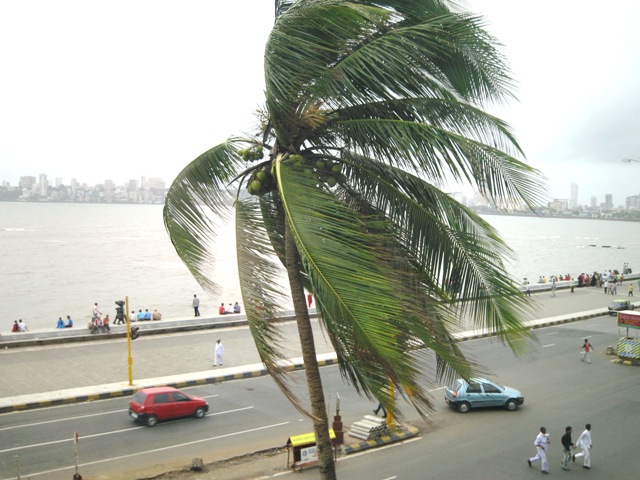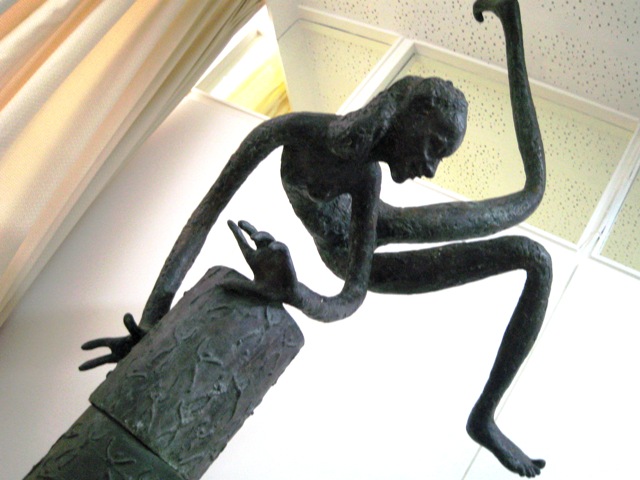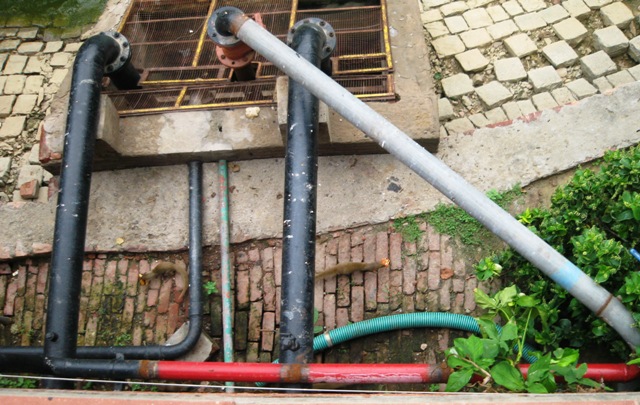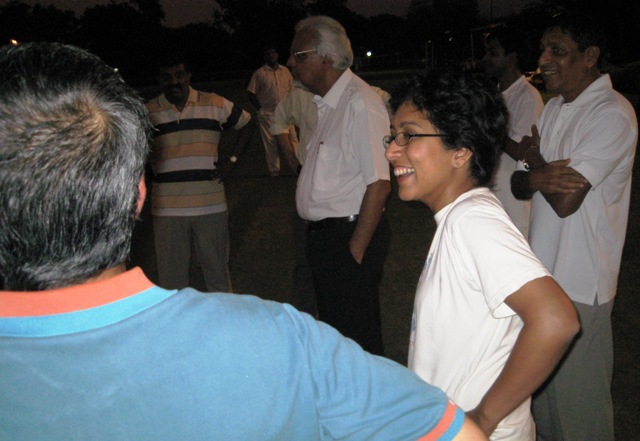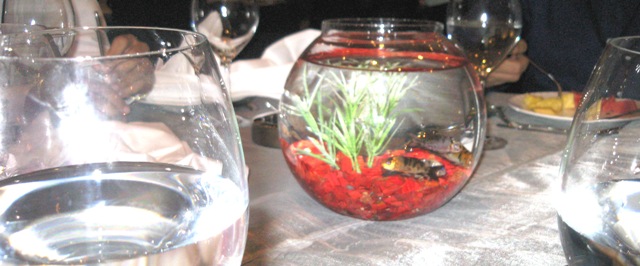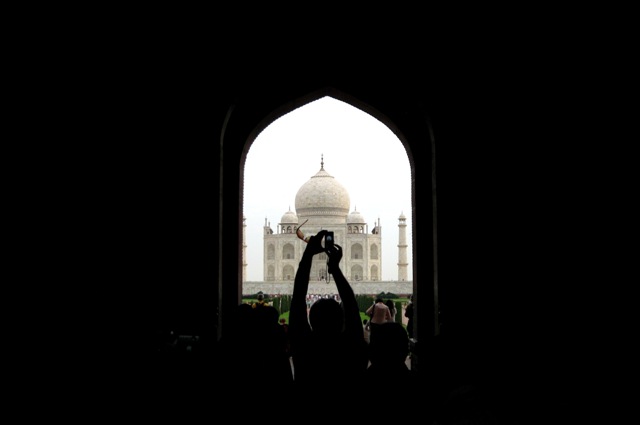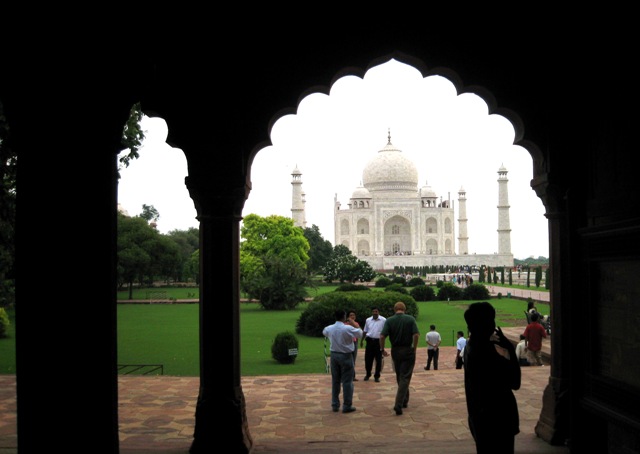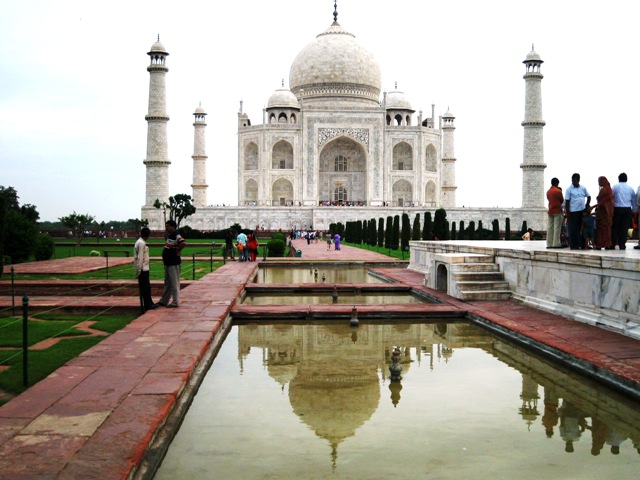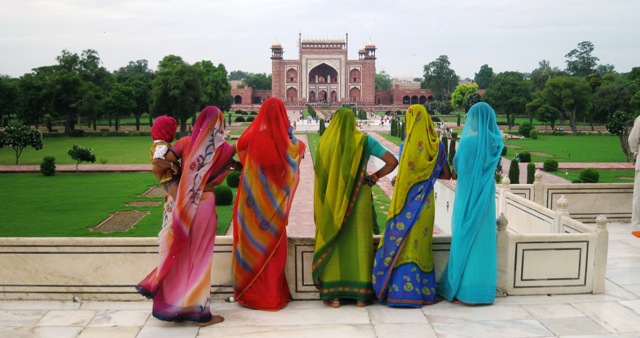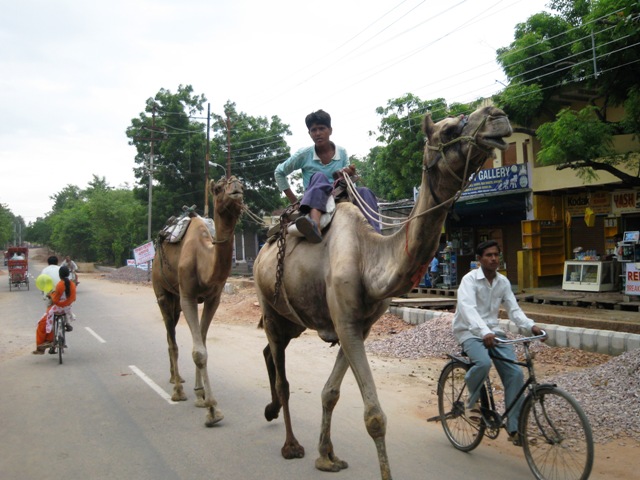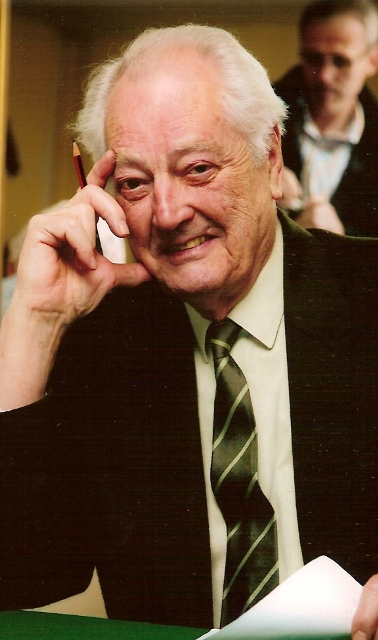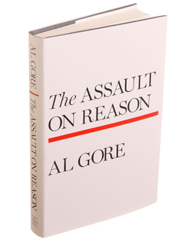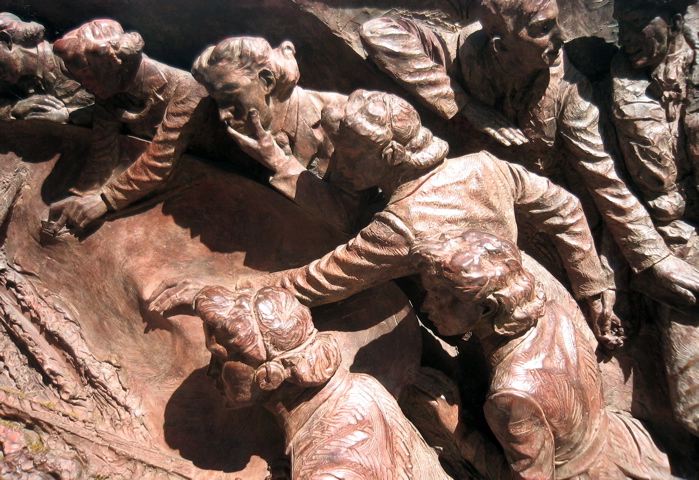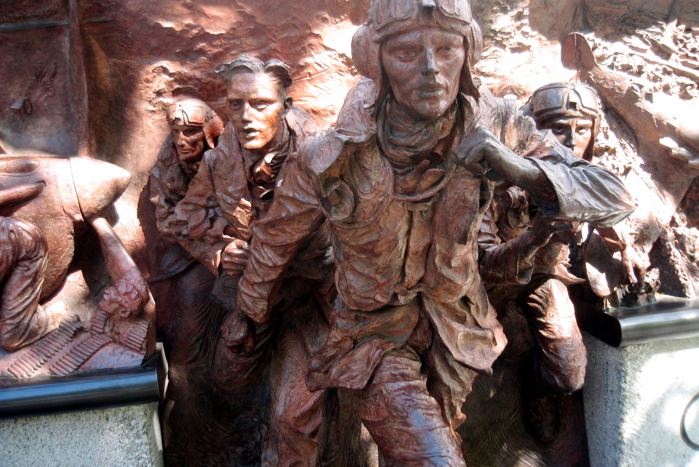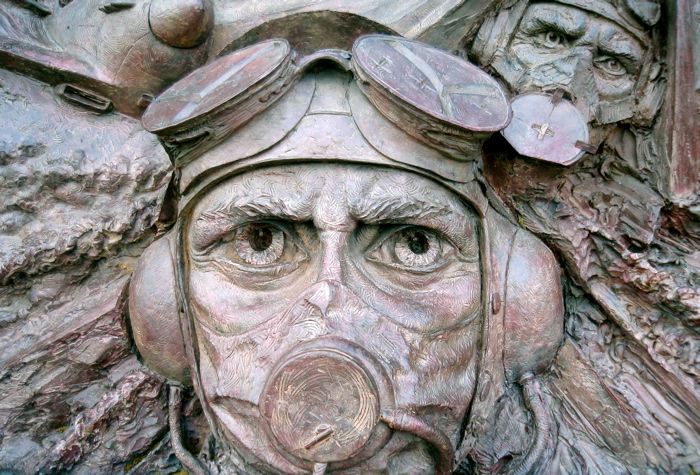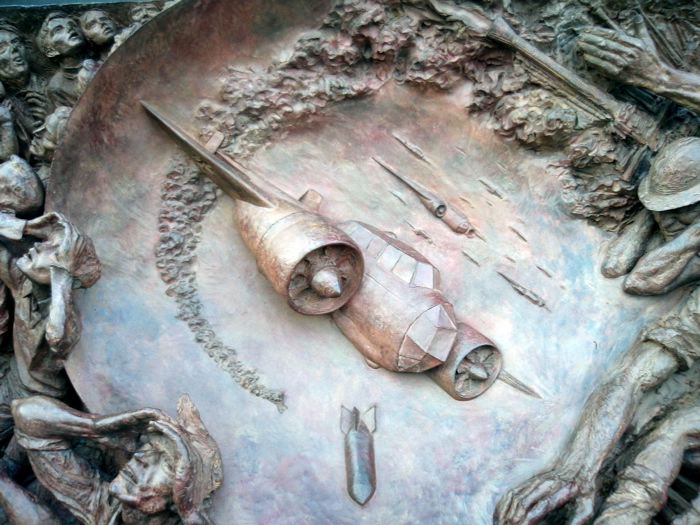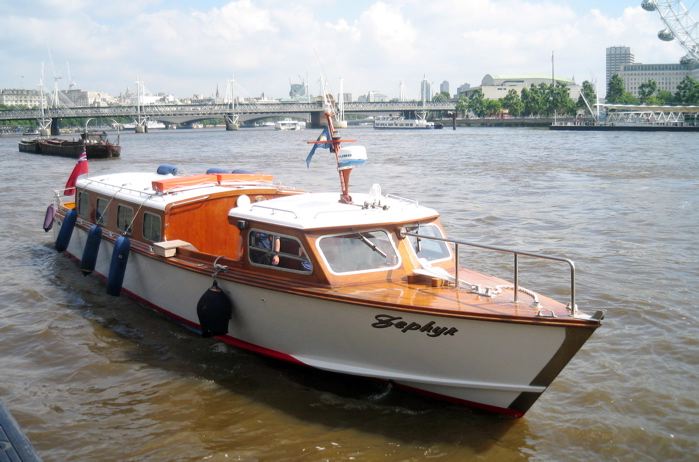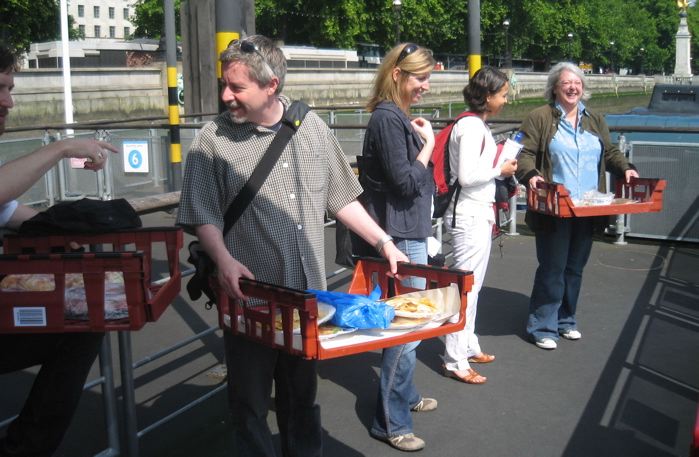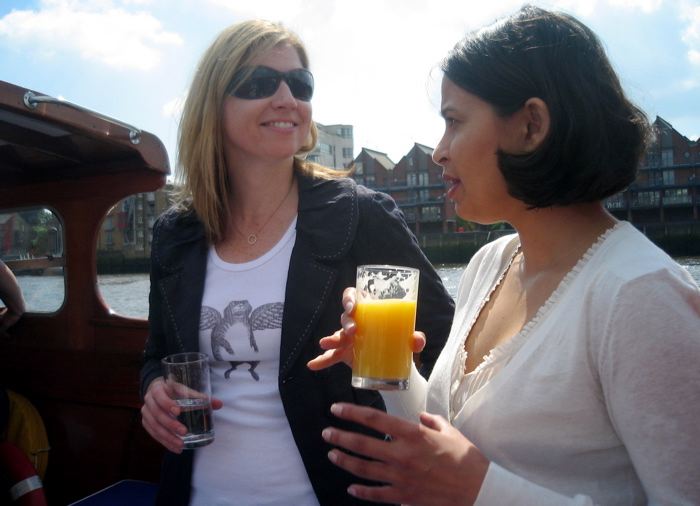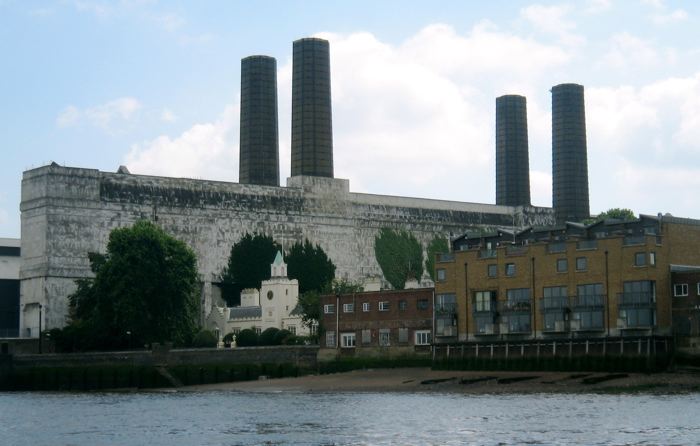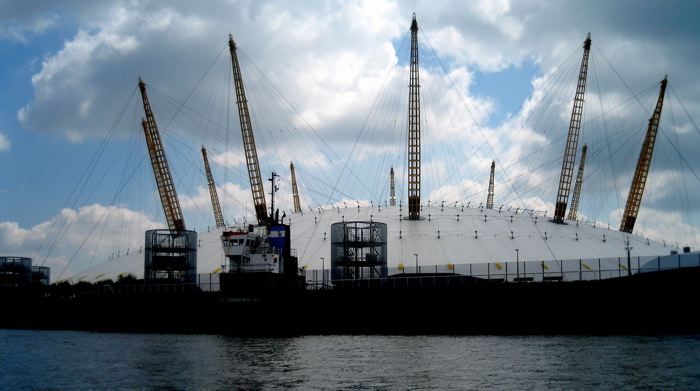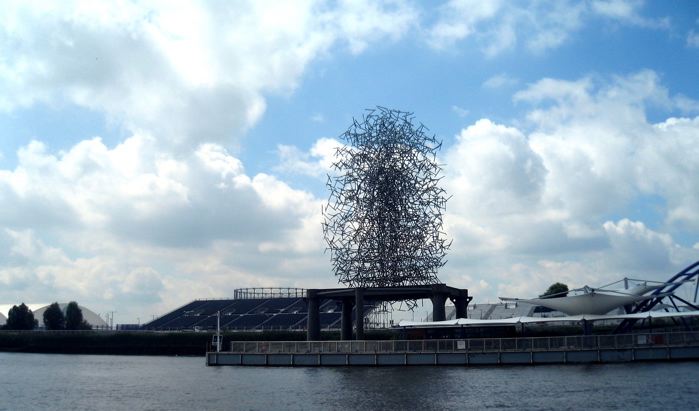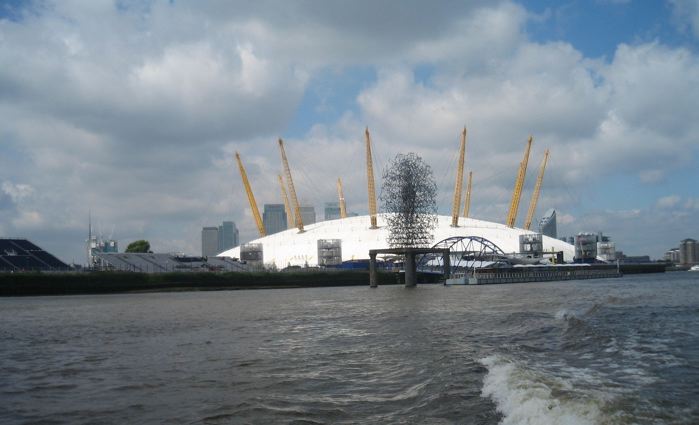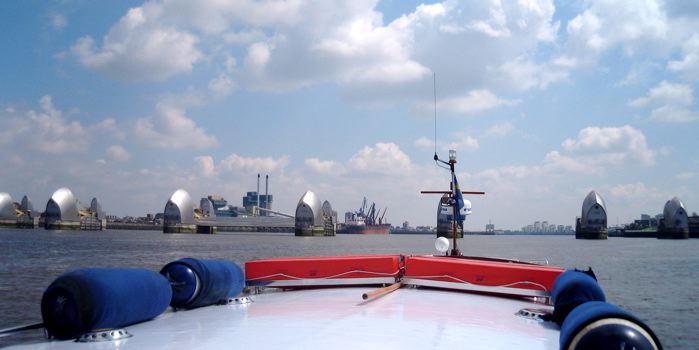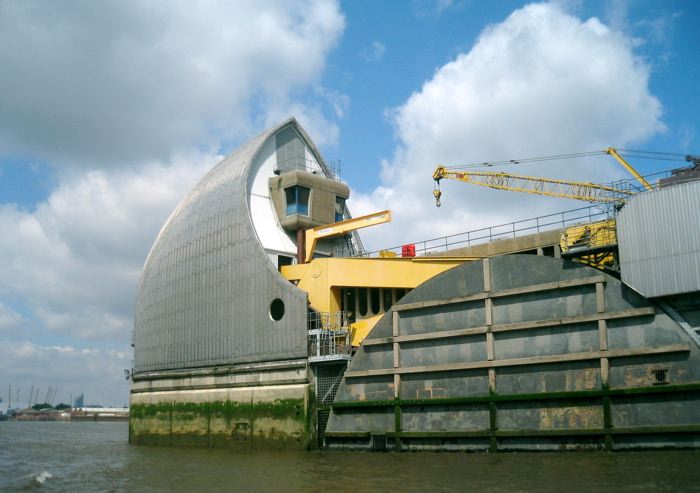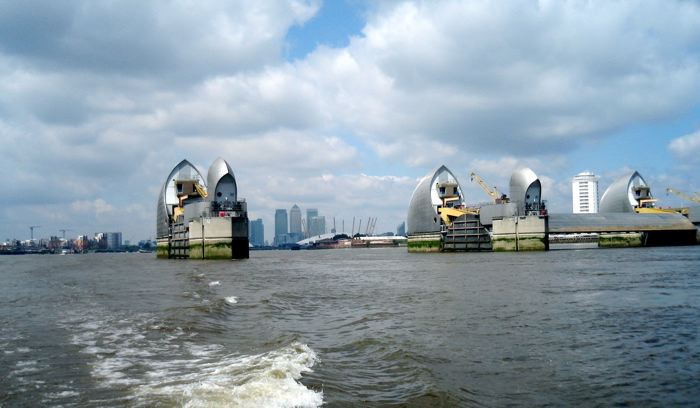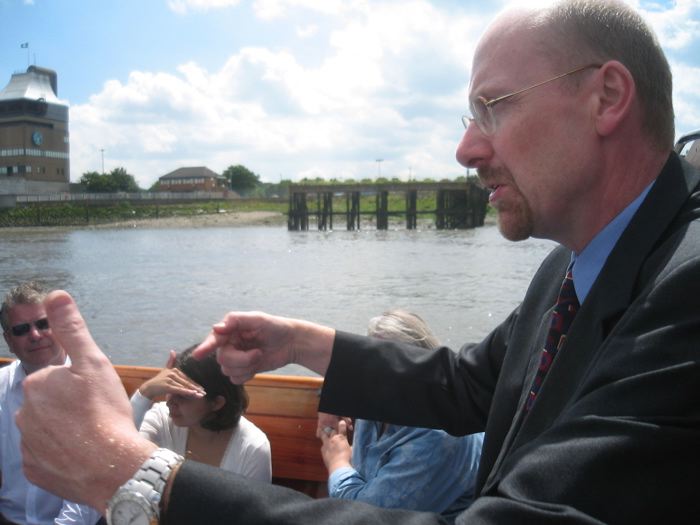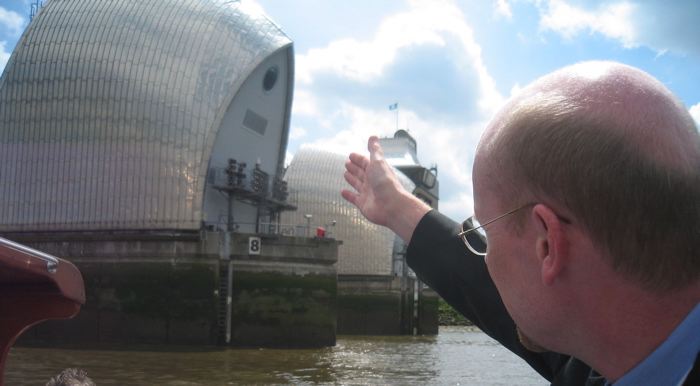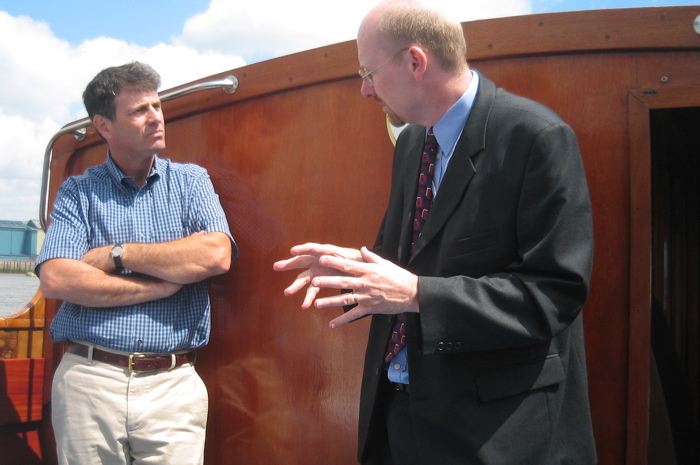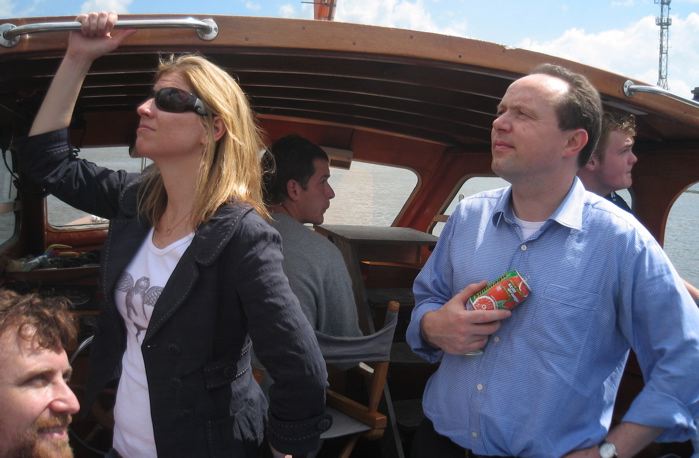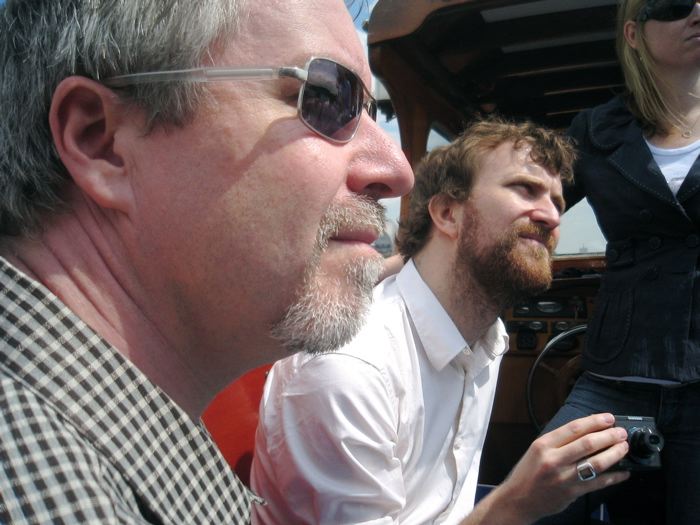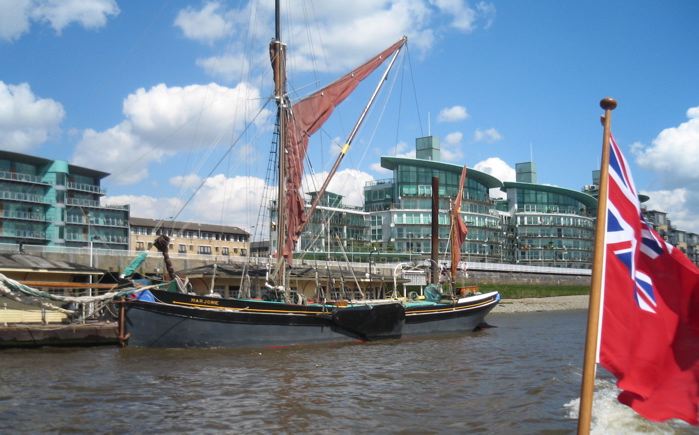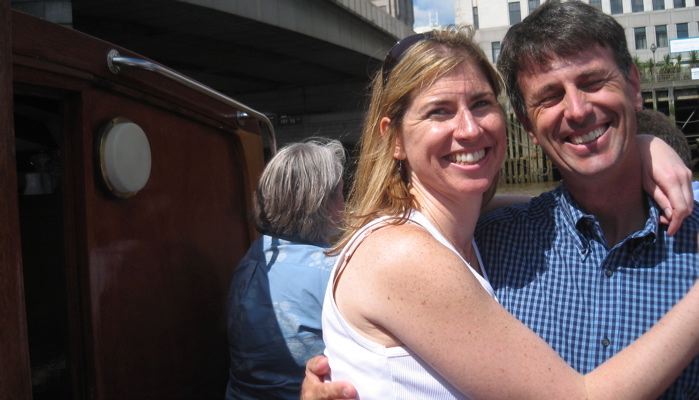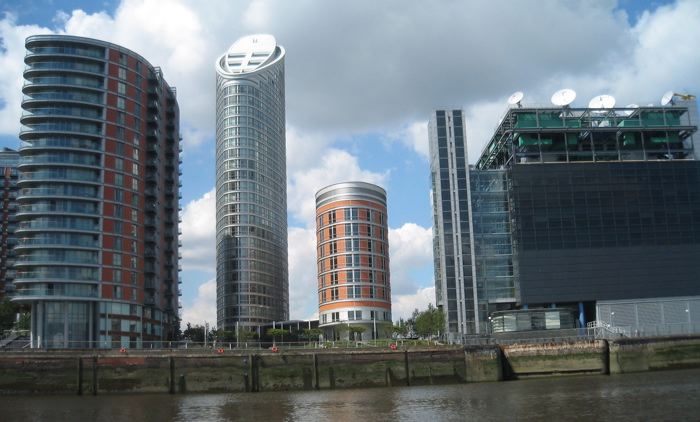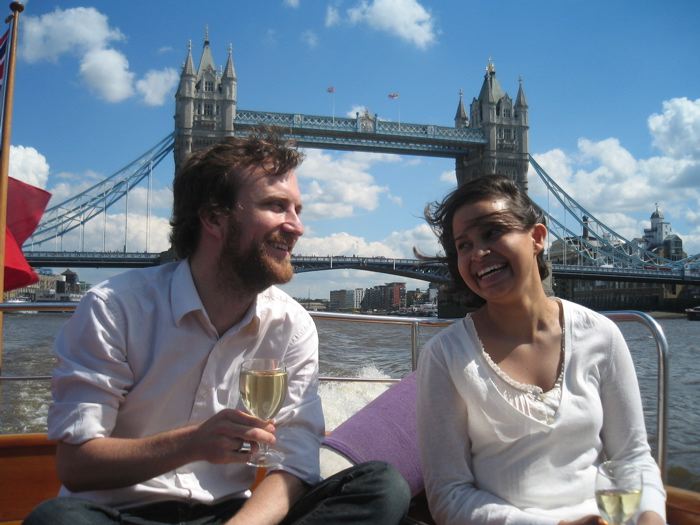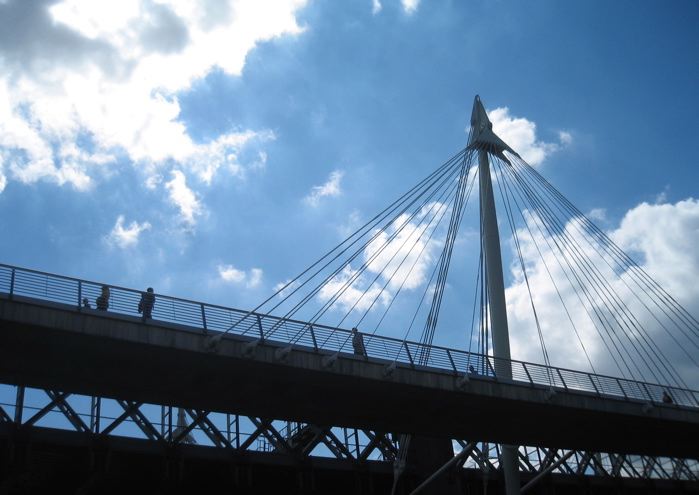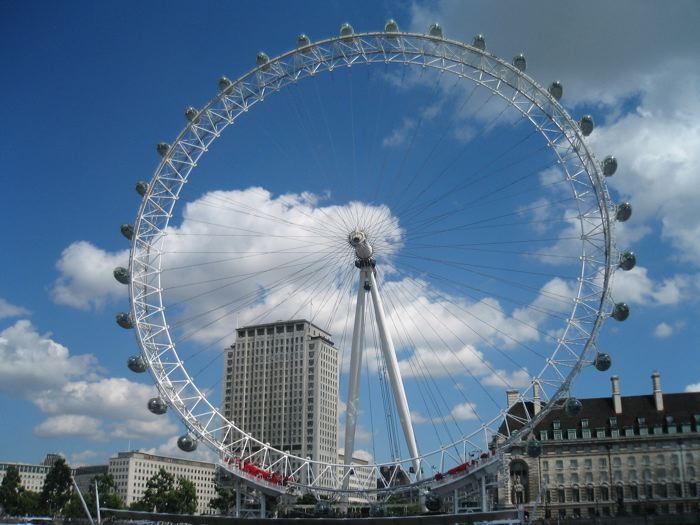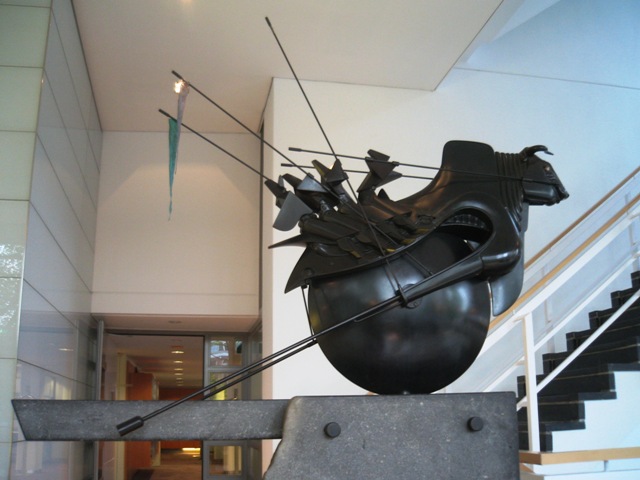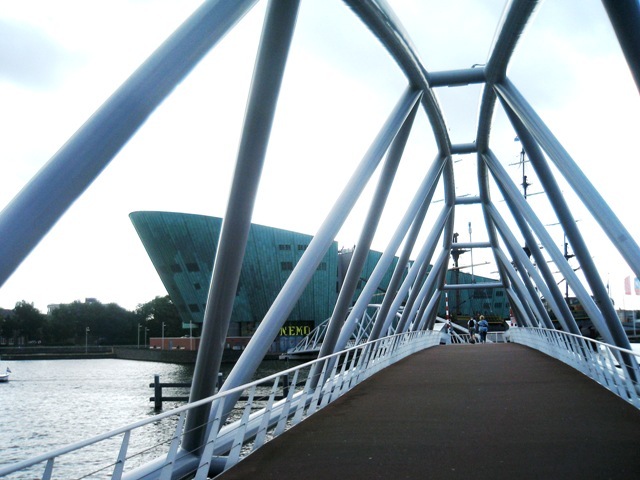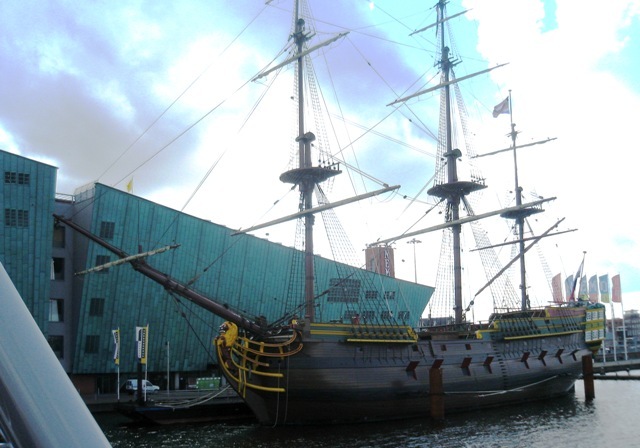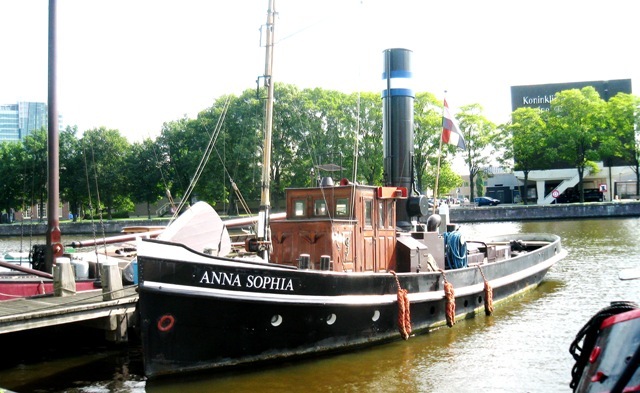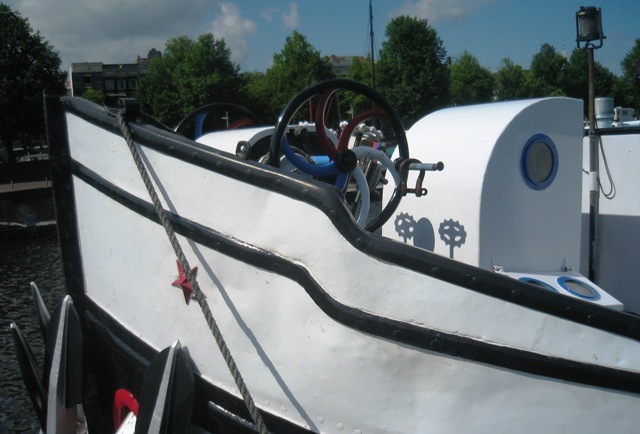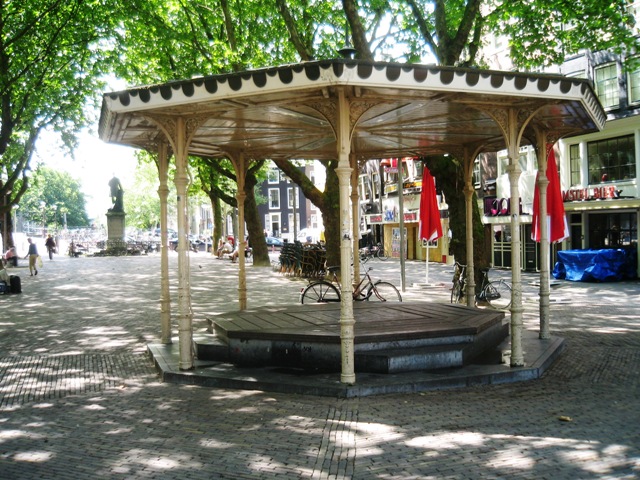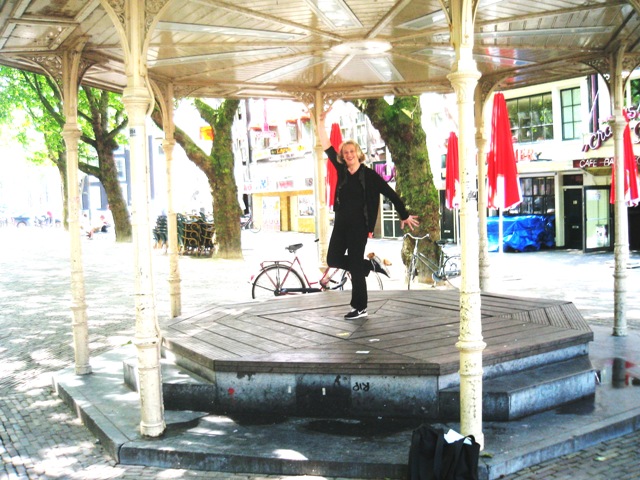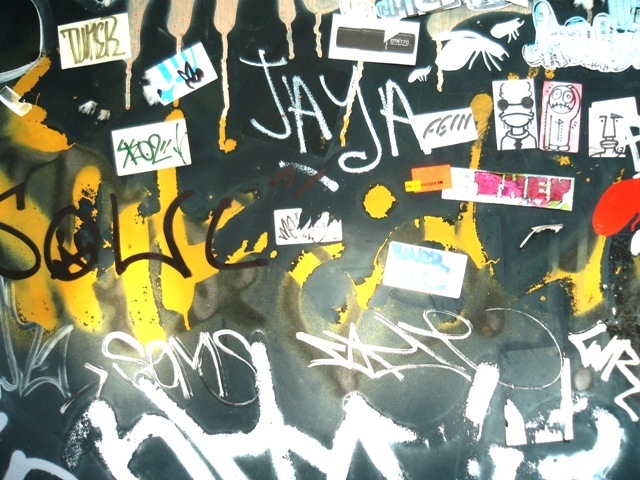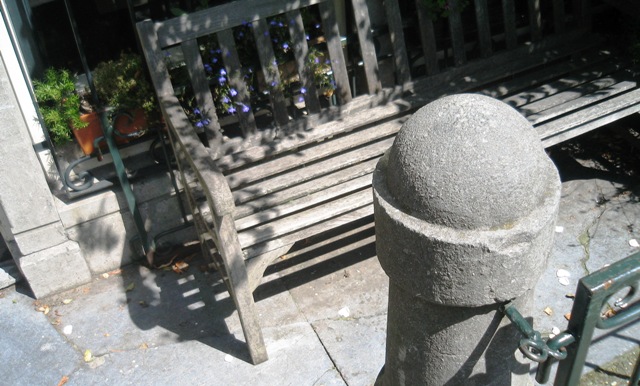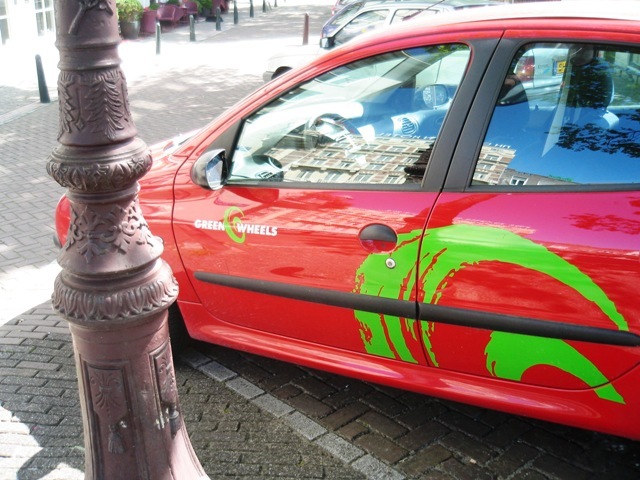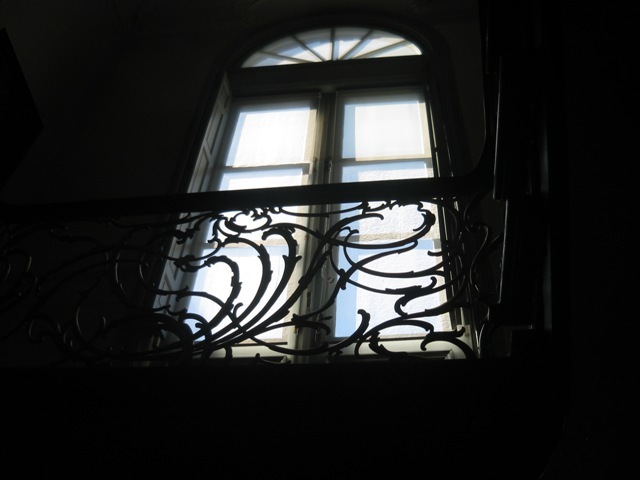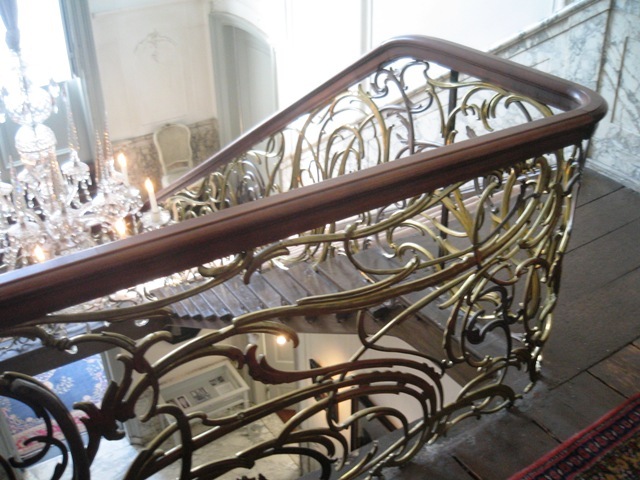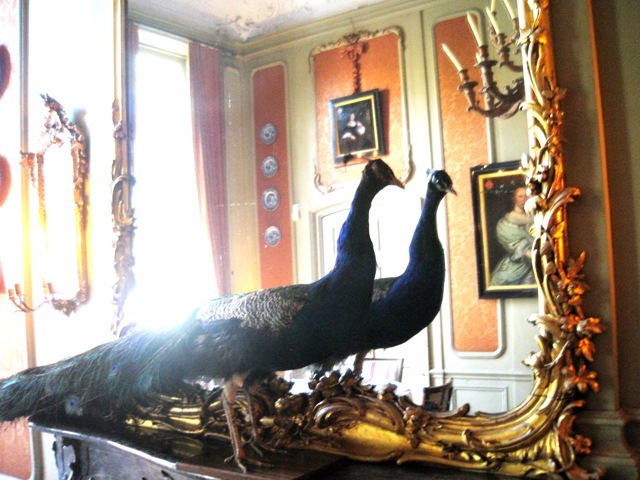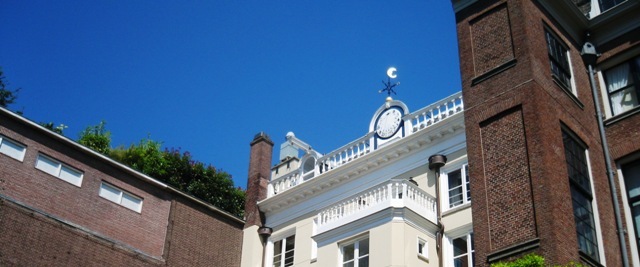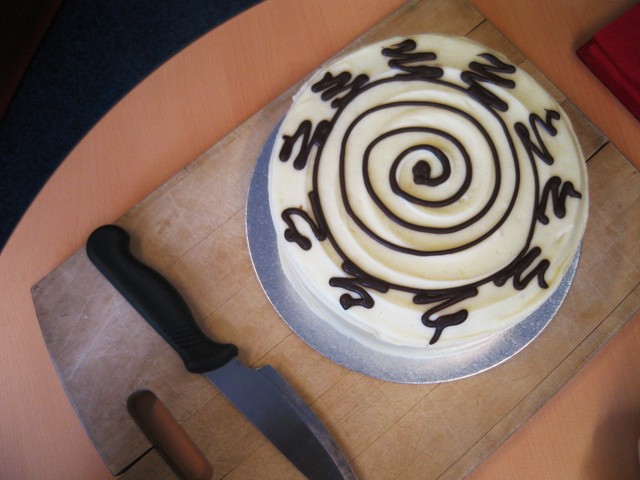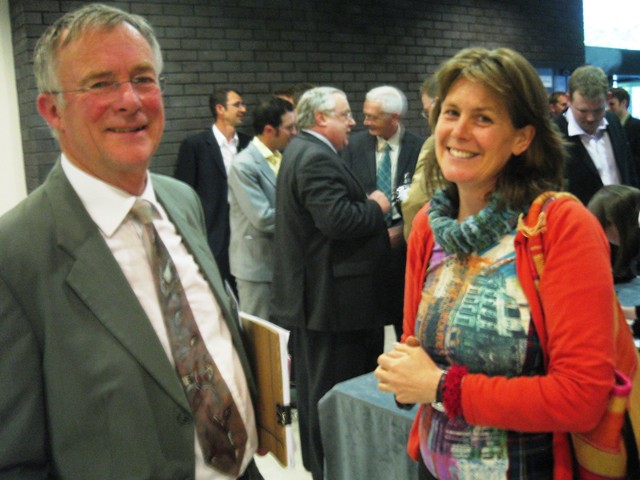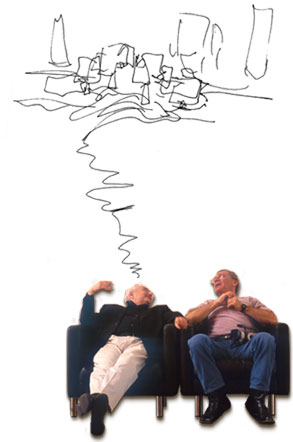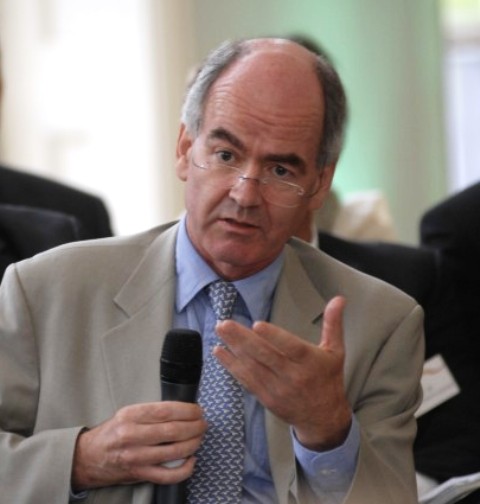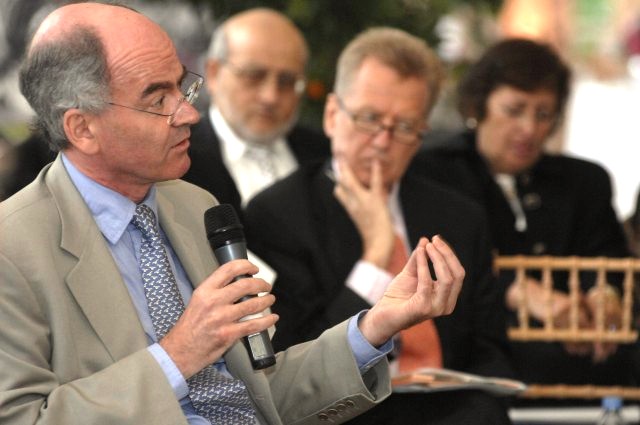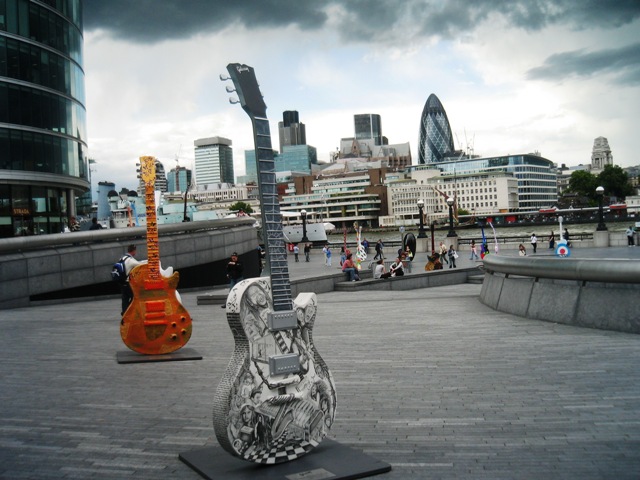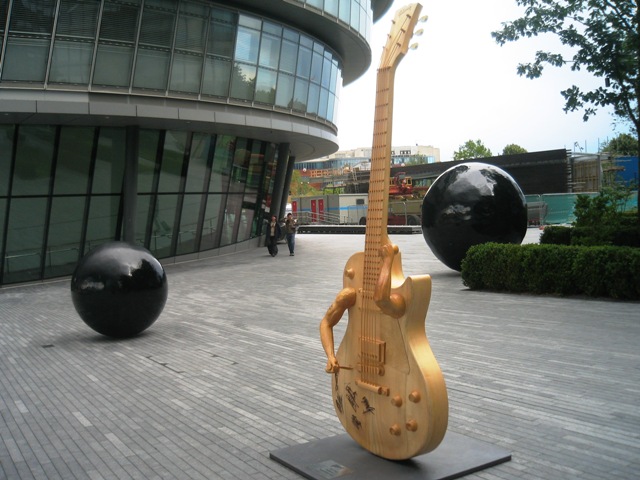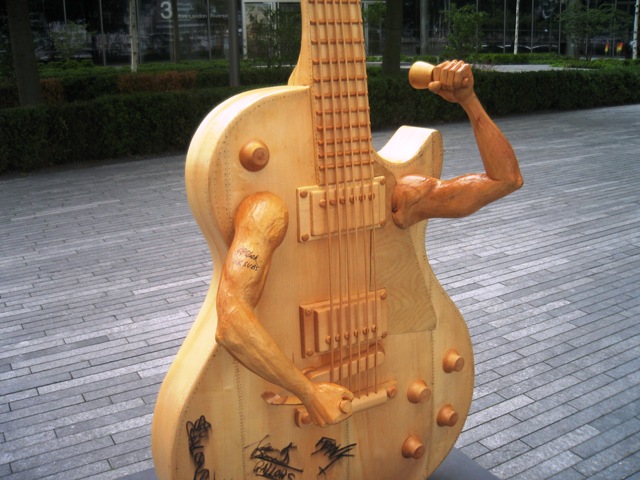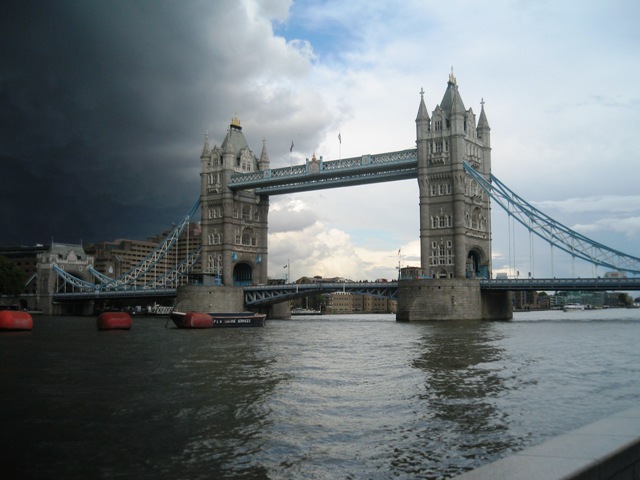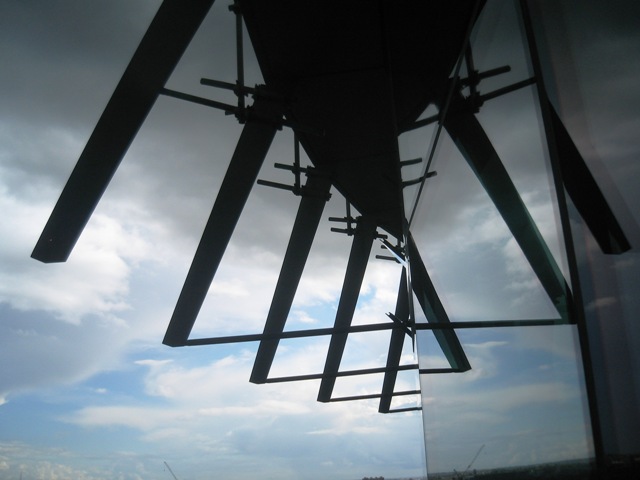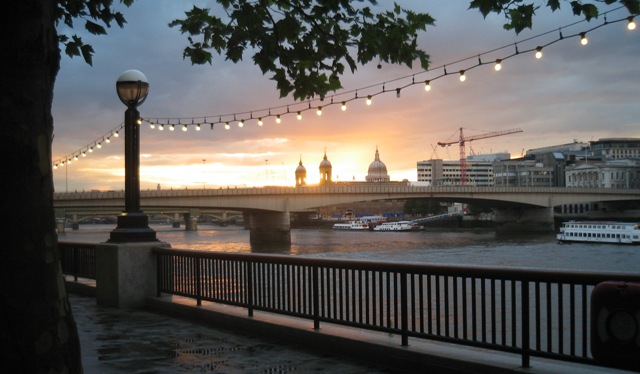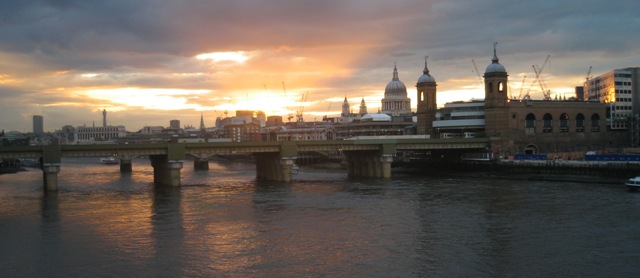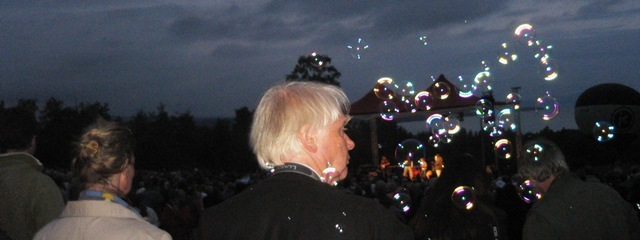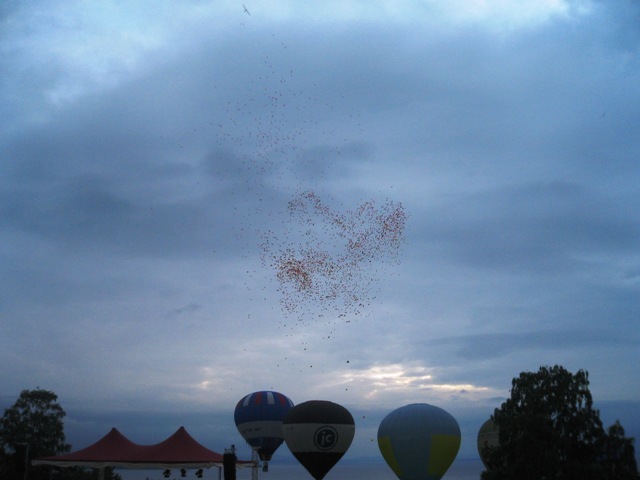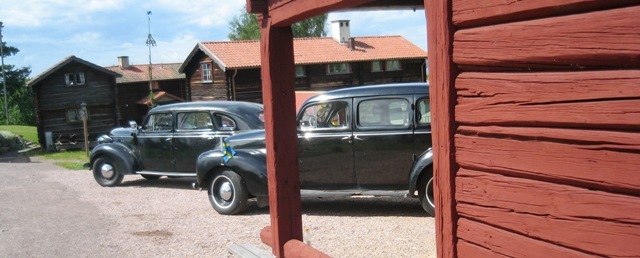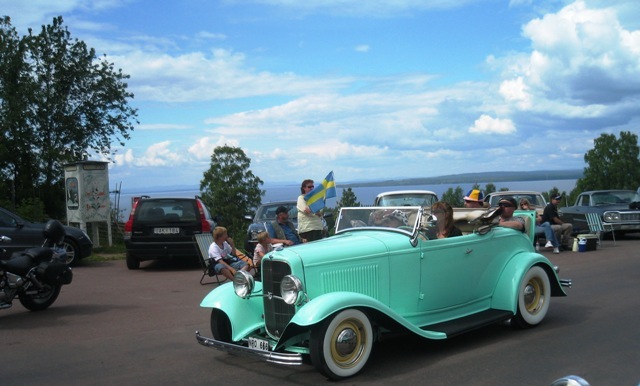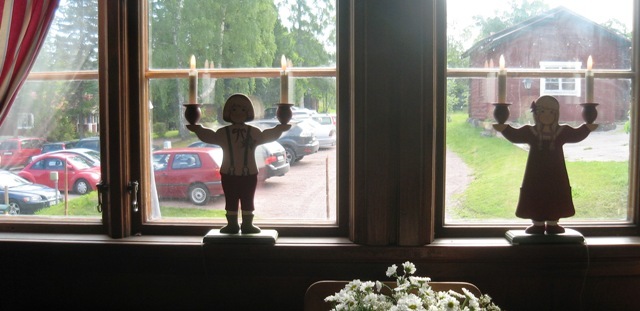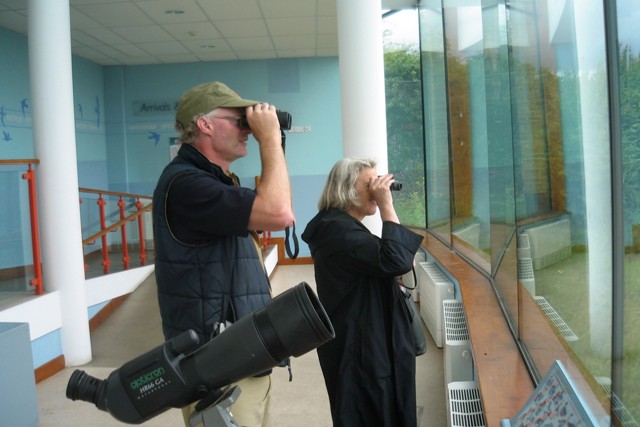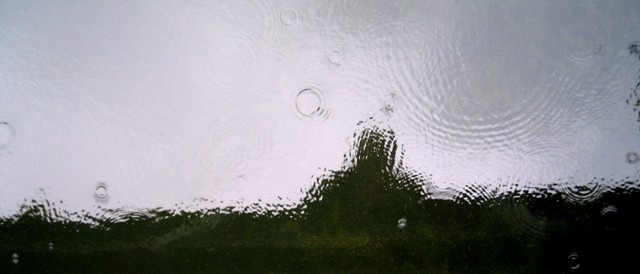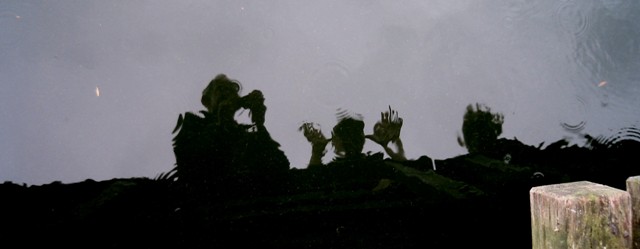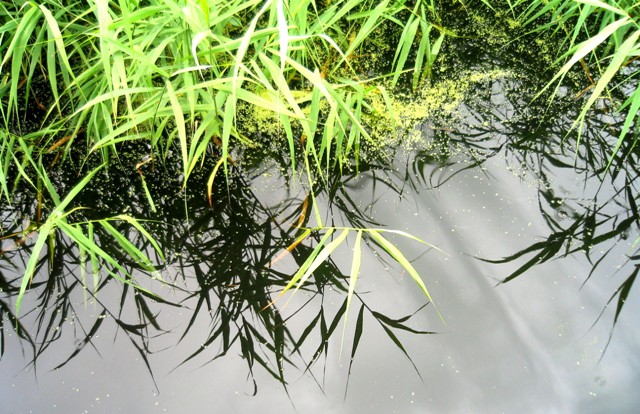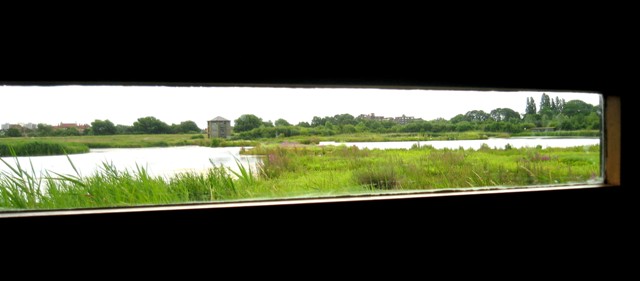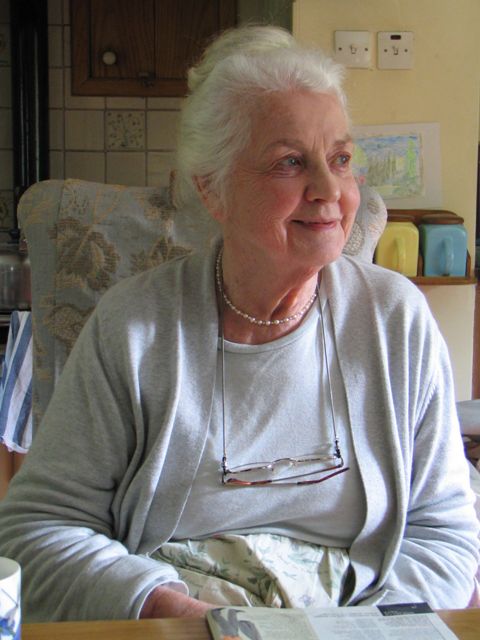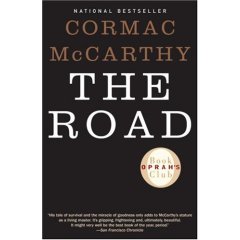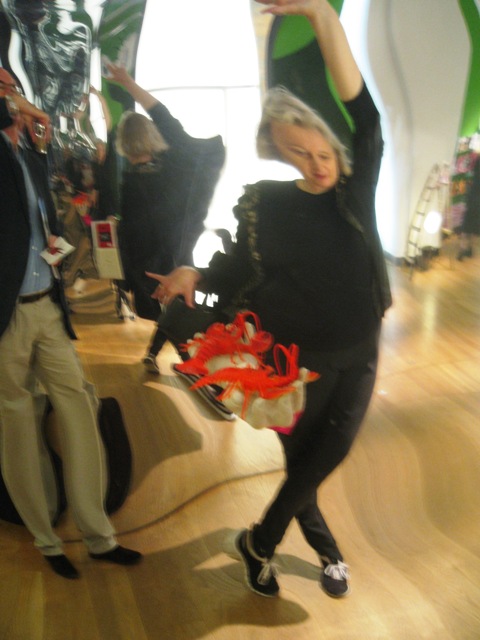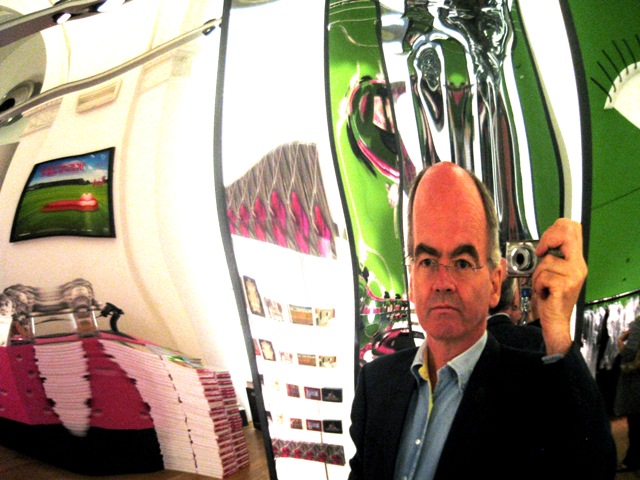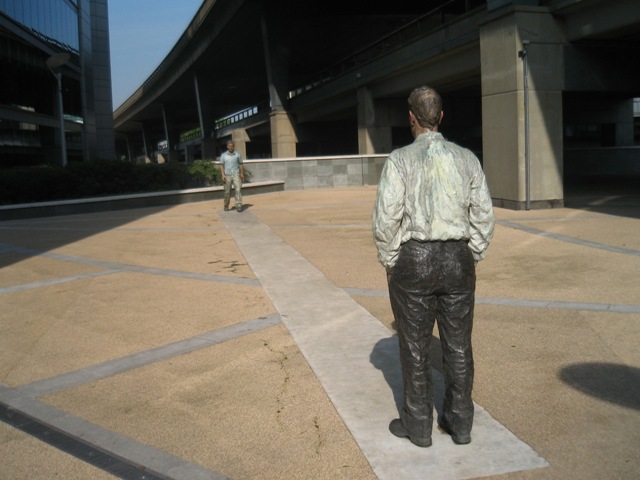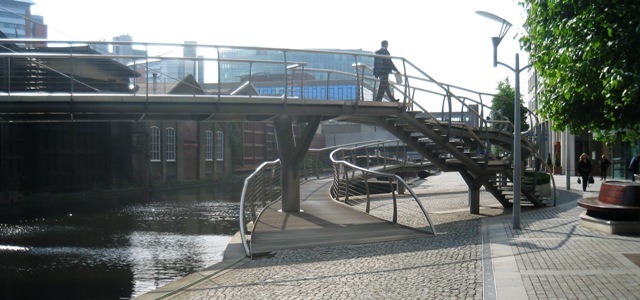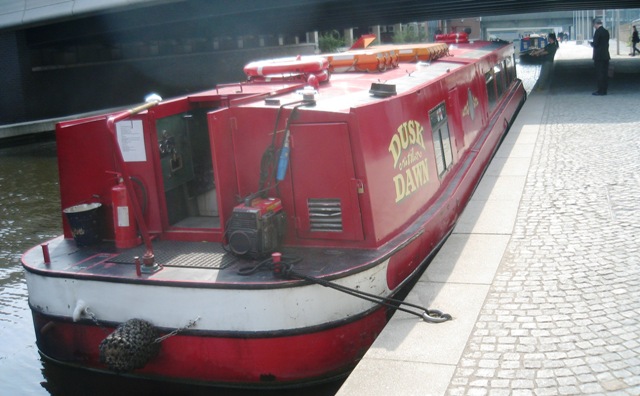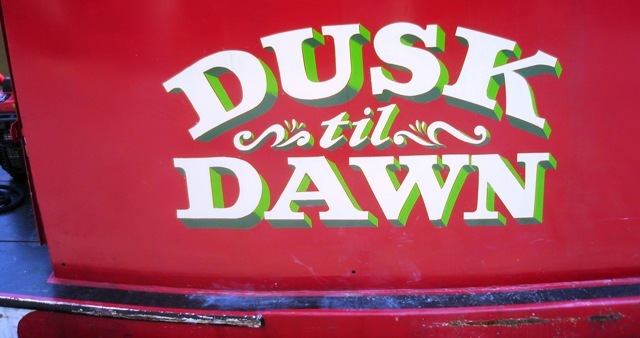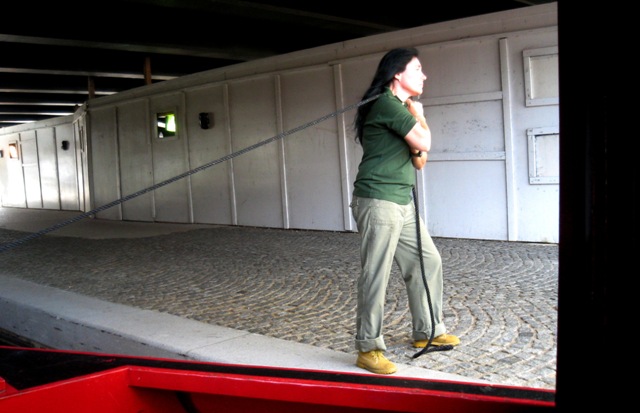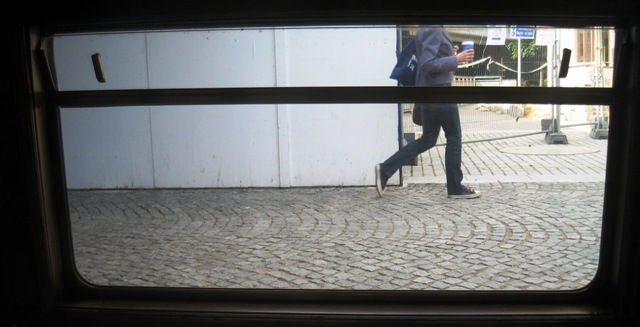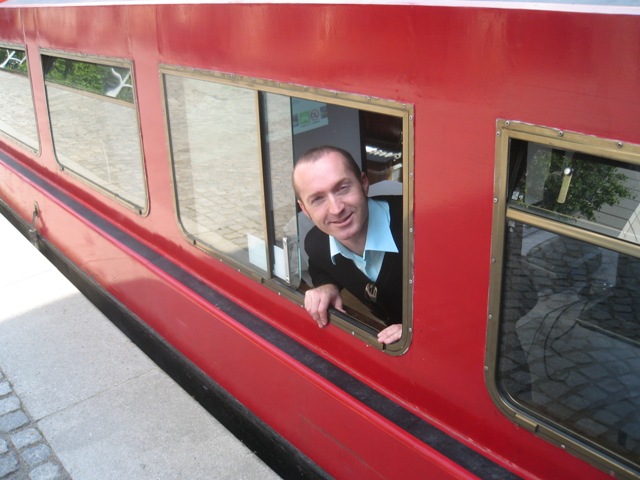Wednesday, October 31, 2007
HENKEL
Back today from a flying visit with Seb (Beloe) to Henkel, in Dusseldorf. They have invested growing effort in the sustainability agenda. We had lunch with senior folk in the area, then did an afternoon session with 30 or so people from the detergents, adhesives and cosmetics business units. Wildly different atmosphere from when I first started visiting chemical plants (Henkel would insist here that they are a fast-moving products company, not in the chemicals sector per se) across Europe, Japan and the US in the 1970s.
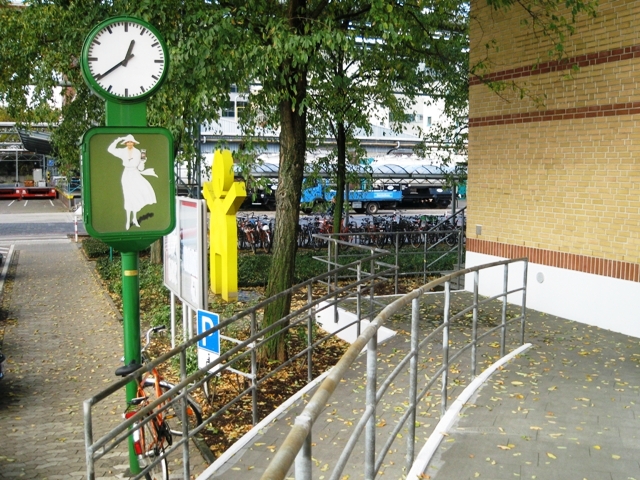
Green sign: Persil is a key Henkel product
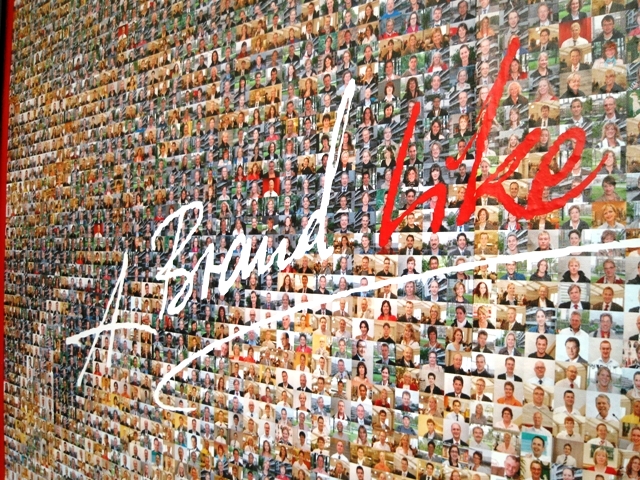
A Brand Like a …
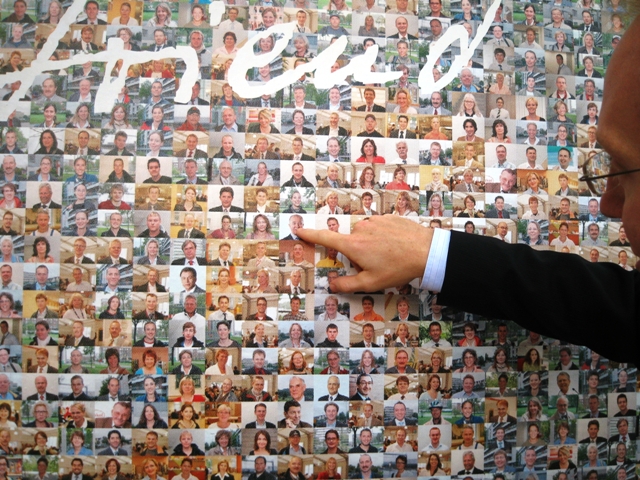
… Friend
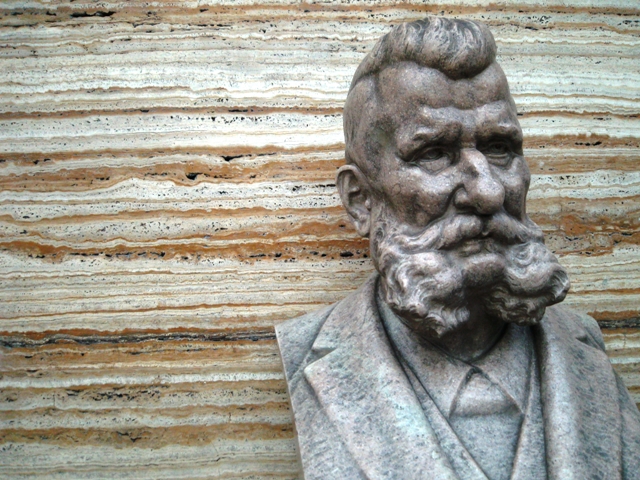
Our Founder
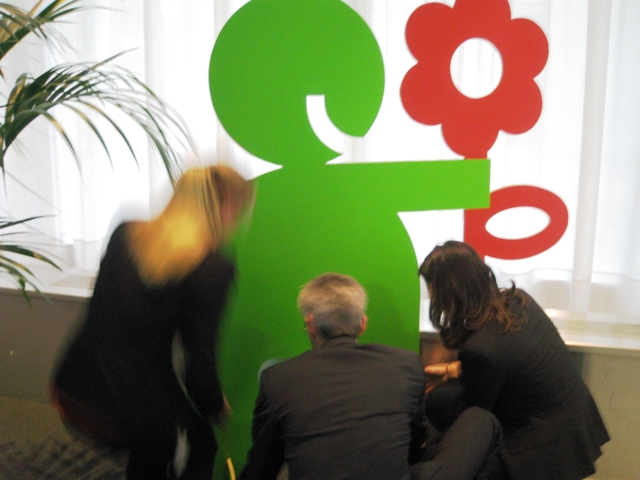
The Henkel icon for sustainability is helped to its feet
Monday, October 29, 2007
HARD RAIN
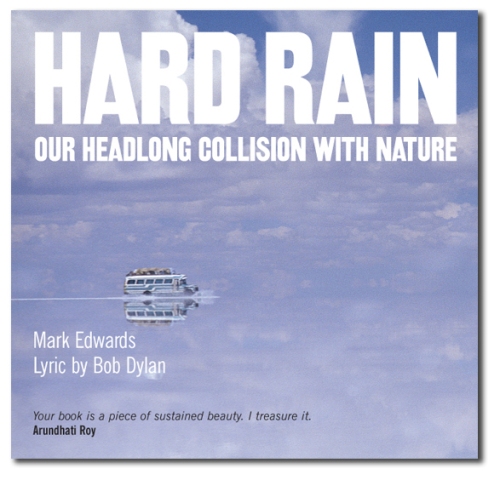
General delight as we opened a pack of copies of the new book Hard Rain in the office today, though the issues raised are pretty grim. Sub-titled ‘Our Headlong Collision With Nature,’ the book has been put together by an age-old friend, Mark Edwards of Still Pictures. Geoff (Lye) and I have contributed a chapter, titled ‘Beware the Climate Fixers.’ For more on the linked exhibition, go to http://www.hardrainproject.com/exhibition.htm.
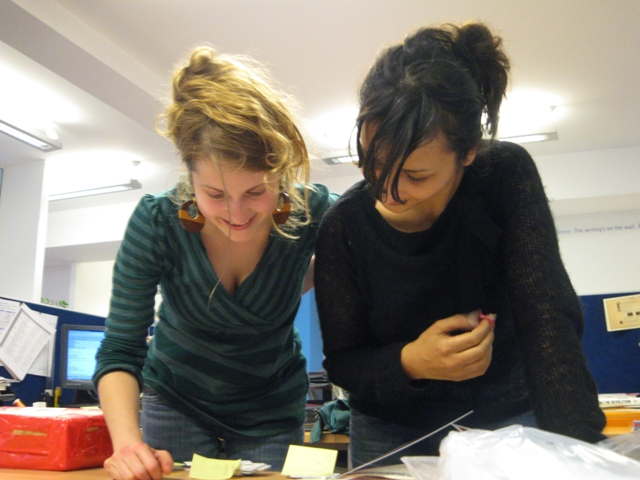
Ori (Chandler) and Sam (Lakha) pore over stunning photo cards Mark sent with books
HE’S NOT THERE
Among the first things I saw this morning as I read the Financial Times was the full page on the new ‘Crossing Borders’ endowment fund being launched in memory of Robert Davies, whose memorial service we went to at Wesley’s Chapel, City Road, later this morning. Prince Charles among those honouring Robert. Then on to reception at The Prince’s Foundation for the Built Environment, in Charlotte Road. Next, lunch with Sophia and David Grayson at the suprisingly good Great Eastern Dining Room just around the corner, after which Sophia, Elaine and I headed back to Bedford Row. Worked frantically on a column for a Japanese magazine, then headed across to the Curzon Mayfair, where Gaia and Hania had invited us to see a preview of the new film on Bob Dylan, I’m Not There. Astonishingly good – Cate Blanchett magnificent. Then Todd Haynes, the director, answered questions, the last one from Hania. Then home to prepare for Germany tomorrow.
Tuesday, October 23, 2007
ANITA’S ARMY
Made my way to Westminster Central Hall last night for the celebration of Anita Roddick’s life and works. Matthew Fox, the theologian (http://en.wikipedia.org/wiki/Matthew_Fox_(priest)), acted as compere, winning a round of applause when he mentioned that he had once been sacked by the Pope. He wondered aloud how many people there had been to an invitation-only wake where over 2,500 people turned up. Anita’s daughter Sam called us “my Mum’s army.” Worst side of my character soon surfaced, though, when we were all encouraged to become activists: from schooldays on I have found taking orders just a little difficult.
Wonderful to collide with all sorts of people, both at the event and on the march across Westminster Bridge afterwards. Found myself sitting just in front of Reed Paget of Belu, whose water later sustained us on our journey. Then bumped, among others, into age-old friends Steve and Sandar Warshal (he of Greenpeace Business, among other things), Craig Sams and Josephine Fairley (of Green & Black’s, and she told me she had been writing about us and The Green Consumer Guide earlier in the day), Rob and Heather Foster (who I knew aeons ago at the Body Shop), Elisabeth Laville of Paris-based Utopies, and then, as we stood, in front of Shell Centre, with placards waving and drums banging, I found myself introduced twice to a begloved and no doubt quite cold Bianca Jagger. All slightly surreal, particularly alongside the Ogoni peacewagon, but all very much in the spirit of the remarkable woman we had all come to celebrate. And I did wonder how many of those in the crowd had client relationships with Shell, as SustainAbility has had for a fair few years. It’s a complex world.
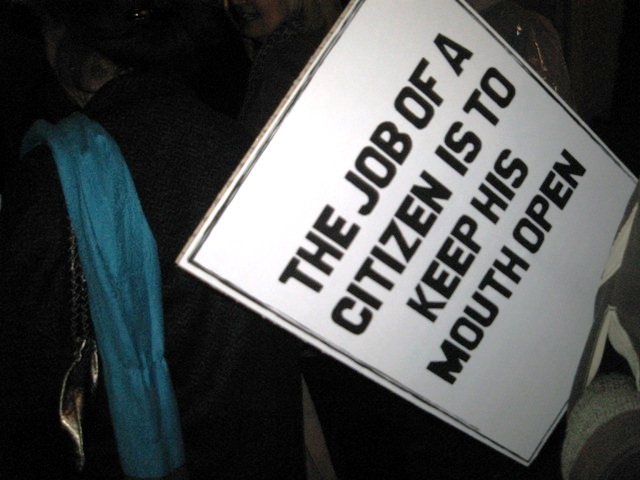
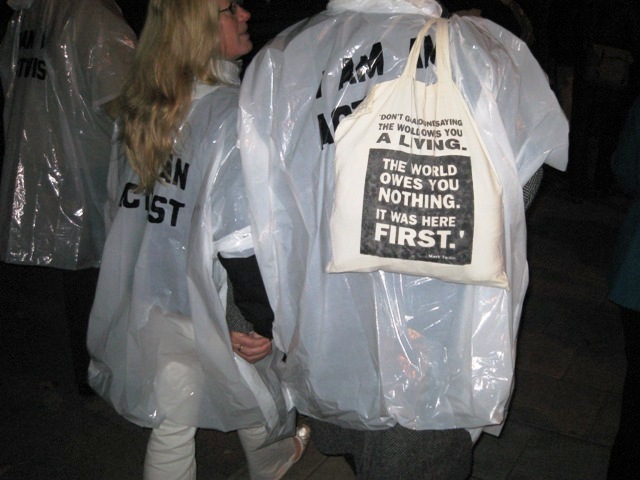
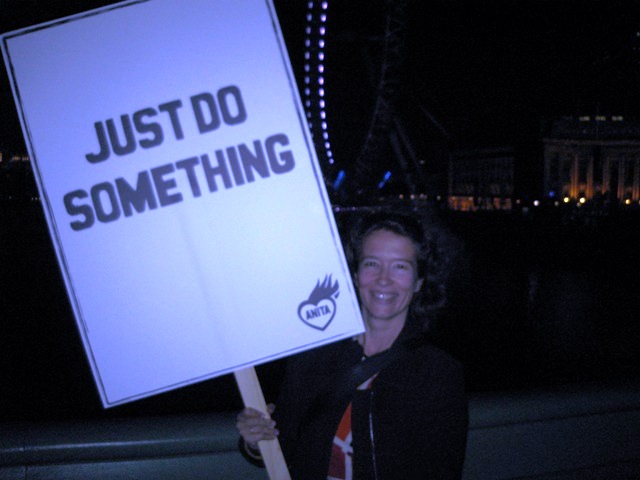
Elisabeth and placard

John Sauven (with placard), Bianca et al
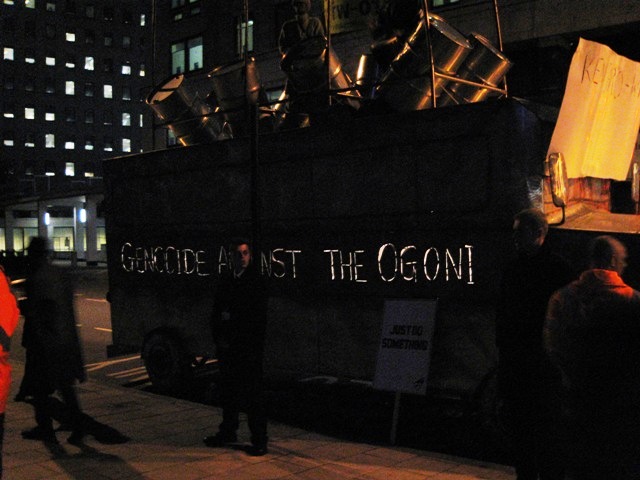
VENTER MODEL OF CREATIVE DESTRUCTION
Every so often you come across someone whose view of the future mutates your own. This morning I spent a couple of hours at the Royal Society as part of a small group invited by Demos to listen to Craig Venter, the synthetic biology man, with respondents including Lord Martin Rees, who heads the Royal Society. Mind-bending stuff – and more on the Demos website (http://www.demos.co.uk/blog/thesynthesizer).
Venter has his yacht Sorcerer II cruising the world’s oceans looking for new organisms and new genes (http://www.sorcerer2expedition.org/version1/HTML/main.htm). Pamela Hartigan and I have covered Venter in the environmental chapter of the new book, but I have scarcely started to scratch the surface of his thinking and work (see http://www.jcvi.org/). But if current demographic, resource and environmental trends continue to play out, my sense is that the market pull on some of his technologies will ramp up mightily, posing massive problems to existing, incumbent industries.
Meeting subject to Chatham House Rule, so limit to what can be said, but interesting that Venter spoke of work on the virus for Spanish influenza, which from 1918 killed 20-50 million people, most of them young and fit. I am reading a book on the subject at the moment, which I picked up at Duke University a few weeks back. One of the things scientists are looking at is what made the virus so virulent – and what enabled it to send young people’s immune systems into choking overdrive, with older people much less affected. (At the higher estimates, the book tells me, 8-10% of all young adults alive in 1918 died.) More than twice as many people as died in WWI. That’s one reason why even the optimistic scenario in recent Raising Our Game report included a major global pandemic as a driver of change – for better or worse. Our airports, airlines and mass transit systems make us much more vulnerable than we were in 1918.
Sunday, October 21, 2007
THE BOOK’S GONE
The week started with my session with the clergyfolk out at St George’s House, Windsor Castle. Turned out to be quite engaging – and my suggestion that we can already see all around us the self-assembling building blocks of a 22nd century religion, based on Gaian principles, but with a harder edge, had working groups discussing whether to compete or collaborate. On my way to the gates, I encountered a hawker with his hawk. Just as people look like their dogs …
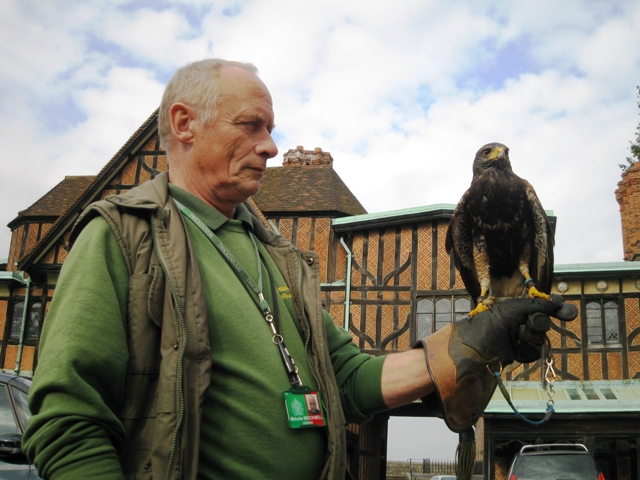
Among the highlights of the rest of the week was an evening party at the Bankside Gallery organised by Mark Campanale and Nick Robins, old friends, for the socially responsible investment (SRI) world. JP (Renaut), Seb (Beloe) and Sophia (Tickell) also came across from SustainAbility. Among those I talked to were a couple of people I hadn’t seen for over 20 years.
On Thursday, Sam faxed the 65 amended pages of the new book to Harvard Business School Press, pretty much the last step for us in terms of content. Now to prepare for the launch in the New Year. In the evening, Elaine and I had dinner with Gaia and Hania at the French House in Soho, wonderful but extremely noisy – partly because we were sitting by a mirrored wall – where my bat’s ears picked up everything and anything.
On Friday, a couple of my fellow columnists for Director magazine came in, independently, and I spent a fair amount of time preparing for upcoming speeches in Germany, The Netherlands and elsewhere. Also met a couple of people who are developing a fascinating new business build around carbon monitoring, of which more anon – where they want me to join their advisory board. Much of the time, though, at least in evenings and weekends, I am working on a new venture, linked to the book. Today, Ritu (Khanna) came to a late lunch and the three of us we went for a walk around Barnes. Very enjoyable, but am feeling quite tired at the moment.
Monday, October 15, 2007
DRAGON OVERHEAD

Have always considered it a sign of good luck if a heron flies overhead, regardless of direction. As I walked to Bedford Row on Saturday, with the acacia trees already in view, I heard a strangely familiar noise in the sky, slightly to the west. A dragonfly came to mind. And then a Dragon Rapide hove into view, puttering across the sky like a dainty old lady. Unmistakable from the paired elliptical wings. Wonderfuel: cheered me up no end. They should be available on the National Health. When I mentioned it to Tim when we got down to Little Rissington later in the day, he said he had flown them, a long time ago. Pulled out his log book to show a photograph, to find there wasn’t one. So we filled in a little bit of history, too.
Sunday, October 14, 2007
STRADDLING THE CRACK OF DOOM
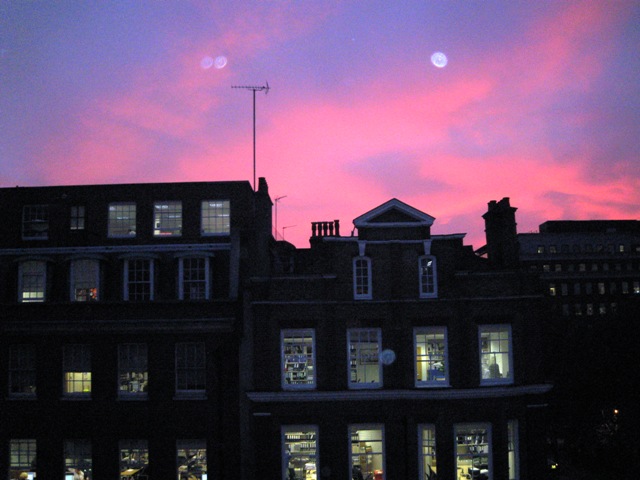
View from my desk in Bedford Row
That, among other things, was the week that Al Gore won the Nobel Peace Prize and the debris continued to float down around Gordon Brown.
In terms of The Week That Was, other things that will stick in my mind include a very lively dinner on Tuesday in Green Park with Colin le Duc (Generation Investment Management), Alois Flatz (SRI investor, ex-SAM), Bernard Mercer (New Philanthropy Capital) and Jason Scott (Generation); the annual meeting between the ECGD Export Guarantees Advisory Council and NGOs focusing on the export credit sector, which I chaired, followed by a dinner hosted by Unilever at the Tate Modern, where we got to walk around Doris Salcedo’s stunning Shibboleth (both on Wednesday); then an evening listening to Steven Pinker on language (Thursday); next a dinner with Kavita Prakash-Mani and her family (Friday); an unscheduled trip to the office to collect something I shouldn’t have left there and then a drive across to the Cotswolds to see my parents (yesterday, Saturday). Elaine (who has been helping Hania into her new flat) and I were so zonked when we got there that we collapsed. I slept for twelve hours straight.

Shibboleth 1
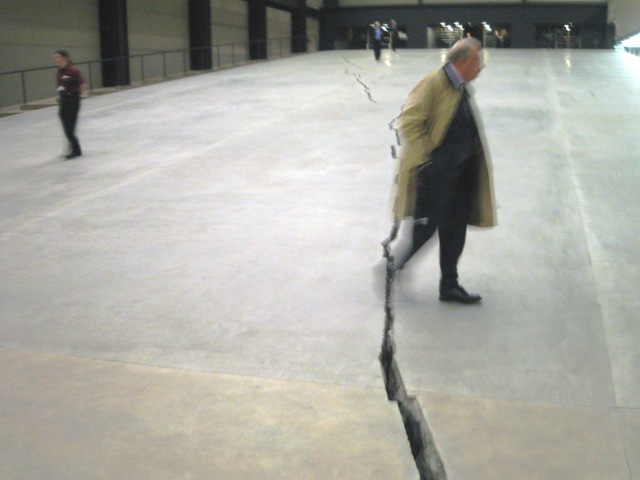
Shibboleth 2
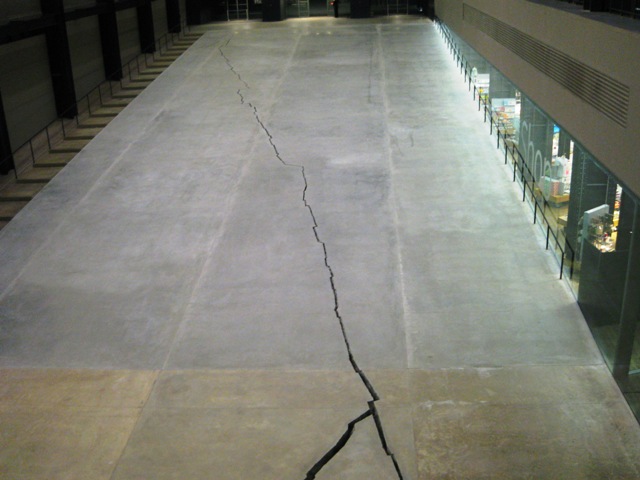
Shibboleth 3
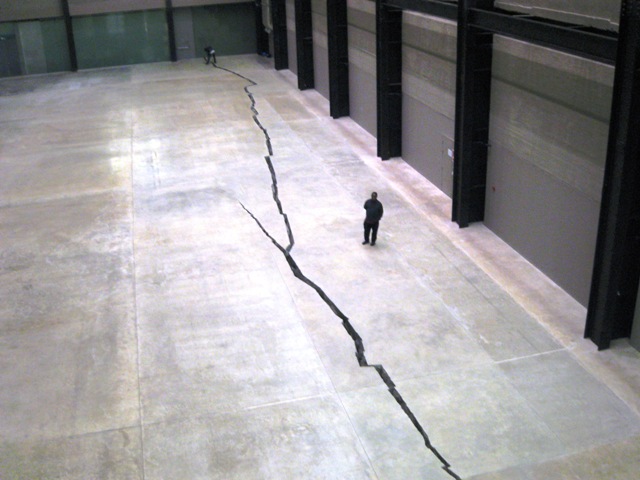
Shibboleth 4
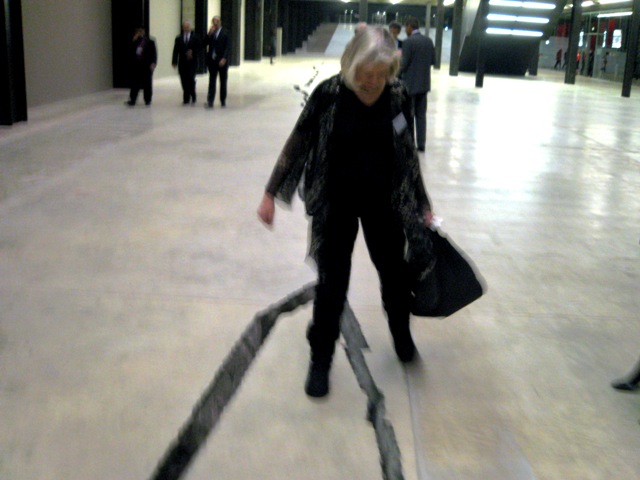
Elaine and Shibboleth 5
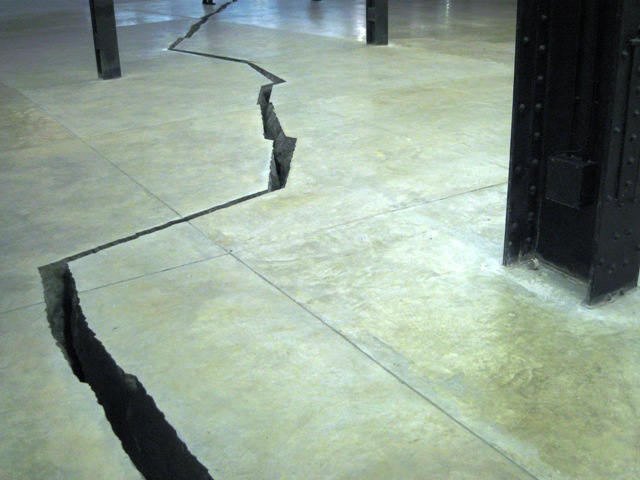
Shibboleth 6
Wednesday, October 03, 2007
FACING A GLOBAL CHALLENGE
Nice article in today Times on Sam (Lakha) and I in the ‘Working Relationships’ section, see http://www.timesonline.co.uk/tol/life_and_style/career_and_jobs/secretarial/article2575465.ece.
